
The Martian
by
Andy Weir
Published 1 Jan 2011
At least three hundred of that needs to be food. Get crackin’.” ••• “UH, DR. KAPOOR?” Rich said, peeking his head into Venkat’s office. “Do you have a minute?” Venkat gestured him in. “You are…?” “Rich, Rich Purnell,” he said, shuffling into the office, his arms wrapped around a sheaf of disorganized papers. “From astrodynamics.” “Nice to meet you,” Venkat said. “What can I do for you, Rich?” “I came up with something a while ago. Spent a lot of time on it.” He dumped the papers on Venkat’s desk. “Lemme find the summary.…” Venkat stared forlornly at his once-clean desk, now strewn with scores of printouts. “Here we go!”
…
It knew when to angle the ship so the ion engines would be aimed correctly. And it knew the location of the ship at all times (easily calculated from the position of the sun and Earth, and knowing the exact time from an on-board atomic clock). Barring a complete computer failure or other critical event, Vogel’s vast knowledge of astrodynamics would never come into play. After completing the check, he ran a diagnostic on the engines. They were functioning at peak. He did all this from his quarters. All onboard computers could control all ships’ functions. Gone were the days of physically visiting the engines to check up on them. Having completed his work for the day, he finally had time to read e-mail.
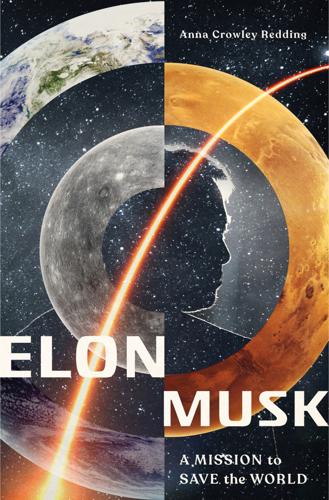
Elon Musk: A Mission to Save the World
by
Anna Crowley Redding
Published 1 Jul 2019
And then received a grown-up physics degree. But it was not a degree in aeronautics or astronautics. Once again, Elon found himself eyeballing a massive learning curve—and jumping right in. BOOKSHELF! Elon read these and more. Ignition! An Informal History of Liquid Rocket Propellants by John D. Clark; Fundamentals of Astrodynamics by Roger R. Bate, Donald D. Mueller, and Jerry E. White. Adeo was taken aback. “I was like, ‘Whoa, dude. Let’s use the Socratic method. I got screwed by the Russians doesn’t equal Create launch company.’”76 Adeo and some of Elon’s other sincerely concerned friends gathered to convince him not to do it.

Asteroid Mining 101: Wealth for the New Space Economy
by
John Lewis
Published 22 Jul 2014
The ark also can provide enhanced situational awareness for the swarm members, reporting their own position as seen from a stand-off distance, and the positions of the other CubeSats. It also allows a 3D viewing perspective that no single spacecraft can achieve. Returning a Piece of the Deep Dark Spacecraft three to four times larger than FireFlies will be able to collect small rocks and regolith from target asteroids. Analyses done by the astrodynamics team at Deep Space Industries have found several NEAs for which round-trip voyages are feasible using small spacecraft capabilities. The calculations are complicated, as the energy required to reach a target changes every year as the orbital positions of the Earth and the NEA shift relative to each other.

Across the Airless Wilds: The Lunar Rover and the Triumph of the Final Moon Landings
by
Earl Swift
Published 5 Jul 2021
Pappy just doesn’t always know what is best. He gets the best answers if he asks the man who is to do the job.” To that end, the Marshall Center was arranged into nine laboratories, each with deep expertise in a facet of space engineering: astrionics (or spacecraft electronics, such as navigation), aero-astrodynamics, computation, propulsion and vehicles, and so forth. Each had “full cognizance and responsibility for all effort” within its specialty, von Braun said. “Competence in depth in each discipline exists at no other point in the organization.” Each of the nine was divided into divisions focusing on subspecialties.

Case for Mars
by
Robert Zubrin
Published 27 Jun 2011
In it he laid out what are now known as Kepler’s first two Laws of Planetary Motion; that the planets move in elliptical orbits with the Sun at one focus, and that the radius vector from the Sun to the planet sweeps out equal areas in equal times. These laws are correct and are found today in all textbooks on astrodynamics. Equally important, however, was what strictly speaking can be called Kepler’s incorrect hypothesis: that the planets were pulled by a “magnetic” force emanating from the Sun, spreading out from it “in the manner of sunlight.” When his opponents accused him of mixing physics with astronomy, Kepler replied, “I believe that both sciences are so closely bound that neither can achieve perfection without the other.”
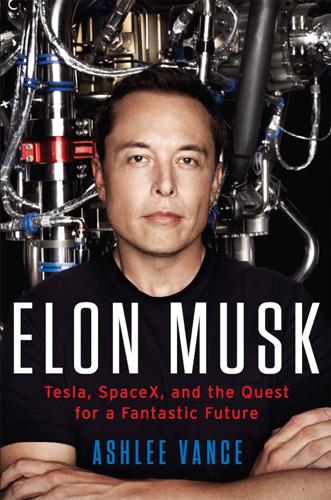
Elon Musk: Tesla, SpaceX, and the Quest for a Fantastic Future
by
Ashlee Vance
Published 18 May 2015
The spreadsheet also laid out the hypothetical performance characteristics of the rocket in fairly impressive detail. “I said, ‘Elon, where did you get this?’” Cantrell said. Musk had spent months studying the aerospace industry and the physics behind it. From Cantrell and others, he’d borrowed Rocket Propulsion Elements, Fundamentals of Astrodynamics, and Aerothermodynamics of Gas Turbine and Rocket Propulsion, along with several more seminal texts. Musk had reverted to his childhood state as a devourer of information and had emerged from this meditative process with the realization that rockets could and should be made much cheaper than what the Russians were offering.
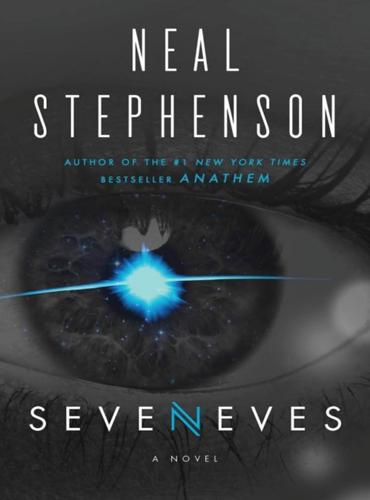
Seveneves
by
Neal Stephenson
Published 19 May 2015
Parambulator was a tour de force of data visualization that would only make sense to people like Ivy, Doob, and most of the Arkies, who had spent a lot of time learning about orbital mechanics. Starting with empirical observations from Lina Ferreira and other mathematically sophisticated biologists, mathematicians like Zhong Hu had extrapolated swarm algorithms from three to six dimensions and physicists like Ivy had figured out how to make these algorithms work under the special constraints of orbital mechanics. In general, every vessel in the cloud was shown as a dot on a three-dimensional scatter plot showing information about its orbit.
…
So there’d been no way to attach it to Izzy. He had brought the little convertible in under manual control, tapping the thrusters one at a time, spitting bullets of spent propellant into space, then pausing for one, five, or ten minutes to ponder the consequences. Space nerd that he was, he knew perfectly well that orbital mechanics did not obey the rules of earthbound physics. He had enough humility, and enough spare oxygen, to take it slow. Eventually he had drifted close enough to Amalthea that a three-Siwi train with a Grabb on its head had been able to reach out and grapple a fitting on the edge of his cockpit. He had then ejected himself from the vehicle, floating free in space, and gone on a little tour of inspection, firing off occasional messages to Dinah so that she could know where he was.
…
Judging from some interactions that had been happening as crowding and stress had gotten more intense, she was going to have her work cut out for her. A bunch of desperate people crowded aboard a pitching and rudderless fishing boat was an uncomfortably close match for the situation up here. Luisa had a relaxed self-confidence that made it easy for her to admit that she knew absolutely nothing about such topics as orbital mechanics. But it was more than just that; she knew how to use her own ignorance as an icebreaker in conversations. Izzy was full of people who were skewed toward the Asperger’s end of the social spectrum, and there was no better way to get them to start talking than to ask them a technical question. But when everyone else was busy, Luisa was not above googling her question down to Earth and latching on to a YouTube video, as she was doing now.

The Last Dance
by
Martin L. Shoemaker
Published 2 Nov 2019
DYSON The Aldrin Express derives its name from Buzz Aldrin, whom most people know as the Apollo 11 astronaut who walked on the moon alongside Neil Armstrong in 1969. Not as many people know that Aldrin was the first astronaut with a PhD (from MIT), and his doctoral thesis was “Guidance for Manned Orbital Rendezvous.” NASA selected him because of this expertise. The other astronauts soon nicknamed him “Dr. Rendezvous” as a result. Aldrin’s orbital mechanical skills were needed when the radar failed during Gemini 12. Aldrin did the calculations in his head while Jim Lovell piloted their ship during a rendezvous in Earth orbit. If a similar failure had occurred in lunar orbit, he could have helped Armstrong rendezvous with Mike Collins in the “mother ship” while out of touch with Mission Control.
…
I had the urge to knock him out of that chair, but I held my temper. Barely. I had signed aboard the Aldrin’s first full cycle to Mars and back. She had been through shakedown cruises in Earth-Luna space before then, but now she would begin a series of boost maneuvers to launch her on a cycler trajectory to Mars. After a flyby, orbital mechanics would sling her out and eventually back to Earth; and then, with skilled piloting, she would repeat that cycle, Earth to Mars and back, again and again with minimal fuel costs. All it took was time: five months out, twenty-one months back. I faced over two years under a captain whom I hated.
…
“I see the new habitat rings are completed.” “Completed and half-booked. It’s getting a bit crowded aboard.” Nick was proud of his command, but he didn’t like many people. The more the Aldrin grew, the more he huddled in his black-walled office and let me deal with passengers and crew. “I would offer you an inspection tour, but—” “Orbital mechanics waits for no man,” Morais replied with an old clichè of the space business. “Still, we’ll have time for a fine reception, and for our dance.” Nick’s face was stony. “I’ll have to pass on the dance. It was bad enough Carver got me into this suit. Dancing wasn’t part of the agreement.” The admiral shook her head.
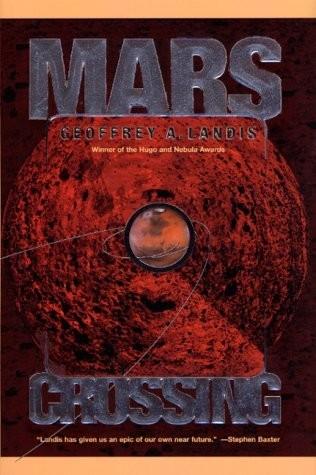
Mars Crossing
by
Geoffrey A. Landis
Published 15 Jan 2000
There were now hundreds of news reporters asking for interviews; Houston was holding them off, but did they want to talk to reporters? When their "no" answer came through, nobody seemed surprised. "Copy that," was the reply. "One more thing for you. Hold on a moment. I think you may want to hear this directly from our orbital mechanics guy." The orbital mechanics guy, as it turned out, was a middle-aged woman. Ryan recognized her; what was her name, Lorentz? She had a reputation for being both hard-working and smart. She spoke in a Texas accent, launching in without bothering to say hello first. "We tracked down the complete specs on that Brazilian rocket, checked it out against a matrix of trajectories available for your launch window.
…
It also meant a little world, appropriate for the tiny cylinder of atmosphere in orbit around the Earth; or with a slight change in pronunciation and spelling, it meant "little Mary," which was the pet name the Russian cosmonauts unofficially favored. As it happened, although the Mirusha was at a nearly identical altitude, it had an orbital plane tilted in a different orientation. The laws of orbital mechanics mandated that there is no easy way to change orbital planes. To get to the Mirusha from the international space station required so great an orbital plane change that the easiest way to do it would actually be to return to the Earth and take off again into the new orbit. So when the news came through the grapevine that the two Russian cosmonauts in the Mirusha were in trouble, that the station was leaking and the Russians had blown up two launch vehicles trying to rescue them, John Radkowski nearly ignored the news.
…
This was little enough— radar readings from the ground tracking stations to confirm what the interior navigation of the crew return vehicle already told him—but he was glad enough for it. "CRV-1, you should be getting transponder now," Nordwijk told him. He frowned. He was getting nothing. No, there it was on his rendezvous radar. But where was the transponder? He was coming up on it backward; by the strange ballet rules of orbital mechanics, Mirusha was coming up from behind him as he rose to meet it. He could see it now, a brilliant, lumpy star blazing in the sunlight. "Roger, I've acquired it visually," he said. He checked the rendezvous radar. Eight kilometers, closing rate one-fifty meters per second. He corrected his vehicle pitch slightly and made a three-second engine burn with the maneuvering engine, raising his perigee to bring his orbit closer to synch with the Russians, and checked the radar again.

Shoot for the Moon: The Space Race and the Extraordinary Voyage of Apollo 11
by
James Donovan
Published 12 Mar 2019
Command pilot McDivitt tried to maneuver his Gemini close to the spent upper stage of its Titan II booster, but as he pointed the nose of his craft toward the target and activated his thruster jets to close the distance, a curious thing happened—the booster moved away and downward. A few minutes later, he tried again, once more with no luck. After a few more attempts, Kraft finally told him to quit trying. Without an onboard rendezvous radar, planned for later Gemini missions, rendezvous would have to wait. What this revealed was the complexity of orbital mechanics, which on the most basic level worked exactly the opposite of how it did with aircraft. Adding speed while in orbit raises a ship to a higher orbital path, where it will paradoxically slow down, since the craft’s orbital speed is a direct function of its distance from the center of gravity of the object it’s circling—in this case, Earth.
…
At the correct moment, a burst of speed will lift the craft close enough to the target’s orbit to eliminate all relative motion between them, at which point these paradoxical effects virtually disappear, and station-keeping, or flying in formation in space, is achieved. Only then can docking be attempted. McDivitt’s failure was a lesson learned, and much of the subsequent Gemini missions would involve perfecting orbital mechanics and rendezvous maneuvers. The second goal, however, was achieved. A few hours after the failed rendezvous, the cabin was depressurized, and after some difficulty, White’s hatch was opened. A hundred miles above the Earth, he went drifting out into the void of space connected to the craft by a twenty-five-foot, gold-tape-wrapped umbilical cord supplying his oxygen.
…
When he arrived at his astronaut interview in a suit and tie wearing his flight wings and Phi Beta Kappa key, Gus Grissom said, “We’ve already seen your résumé. Why are you wearing it?” Small talk was a foreign language to Buzz, and one he never mastered. Even fellow astronauts dreaded sitting next to “Dr. Rendezvous” at dinner, since the conversation usually became a one-sided lecture on Aldrin’s favorite topic, orbital mechanics. He once spent hours lecturing an astronaut’s wife on the subject. “Aldrin,” said one friend, “is a professor who is always on.” One newspaper referred to him by a nickname that some at NASA, and even Aldrin, had used: the Mechanical Man. “I sometimes think he could correct a computer,” one flight planner commented.
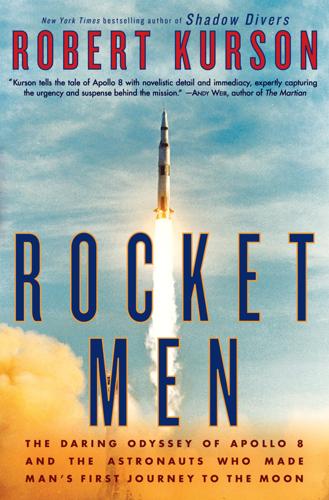
Rocket Men: The Daring Odyssey of Apollo 8 and the Astronauts Who Made Man's First Journey to the Moon
by
Robert Kurson
Published 2 Apr 2018
If Borman added velocity in the wrong part of the spectrum of angles, he might only increase the spacecraft’s vertical separation from the third stage rather than get ahead of it. Or he might even move Apollo 8 back into the third stage’s path. That was one of the challenges of flying in formation in space; you had to know not just your own trajectory but that of the object you were trying to move toward or away from. And there was little about orbital mechanics that one could eyeball against a black background that stretched forever. The spent stage moved even closer to the spacecraft. From Houston, Collins recommended a separation maneuver. “I don’t want to do that,” Borman answered. “I’ll lose sight of the S-IVB.” “Frank, if you use zero, then make the [separation] if possible in the plus-X thrusters.
…
Hearing the clamor of the reporters on their lawns, Susan and Valerie went outside their homes to answer questions from the press. Only Marilyn didn’t move from her spot in front of the television. She just stared at the screen, trying to process the distance between her and her husband. Focus at Mission Control turned to the giant projection screens at the front of the room. By the estimates of trajectory and orbital mechanics specialists, Apollo 8 was about to cross what some called the equigravisphere, the point at which Earth and Moon exert an equal pull of gravity. It had taken until now, about five-sixths of the way to the Moon, to reach the equigravisphere, a testament to the dominance of Earth in its finely balanced relationship with its smaller satellite.
…
It took a second for Borman to realize Anders was kidding. After that, Borman couldn’t stop smiling. Another critical hurdle in the Apollo 8 mission had been cleared. In Houston, controllers looked at each other with a sense of wonder and relief, shaking their heads and then shaking hands. Orbital mechanics—the way the universe ordered and moved itself—worked. And man had figured it out to the split second. The relief at Mission Control was short-lived. In ten minutes, Apollo 8 would fire its Service Propulsion System engine in order to slow itself enough to achieve lunar orbit. The SPS had to work perfectly.

An Astronaut's Guide to Life on Earth
by
Chris Hadfield
Published 29 Oct 2013
It’s mostly a matter of changing your perspective. 2 HAVE AN ATTITUDE NO MATTER HOW COMPETENT or how seasoned, every astronaut is essentially a perpetual student, forever cramming for the next test. It’s not how I envisioned things when I was 9 years old. Then I dreamed of blasting off in a blaze of glory to explore the universe, not sitting in a classroom studying orbital mechanics. In Russian. But as it happens, I love my job—the day-to-day reality of it, not just the flying around in space part (though that is definitely cool). If the only thing you really enjoyed was whipping around Earth in a spaceship, you’d hate being an astronaut. The ratio of prep time to time on orbit is many months: single day in space.
…
During the year I was an ASCAN, the learning curve was daunting and there weren’t a whole lot of opportunities to stand out. After that first year, I worked on certifying payloads, which involved endless meetings to make sure that all the science experiments were actually safe for space flight. In the meantime, just like all my classmates, I was going through general training: geology, meteorology, orbital mechanics, robotics and so on. People who’d been in the Astronaut Office only a year or two longer seemed to be light years ahead, even though they hadn’t been to space yet. Then came the day when the first person in our class got assigned to a space flight. It was a great moment: “Wow, one of us made it!”
…
I got assigned to my first mission shortly thereafter. There may not be a connection, but one thing is certain: aiming to be a zero didn’t hurt my chances. Approaching a space station, you turn your mind to the technicalities of rendezvous and docking. It’s not like parking a car. It isn’t intuitive, because orbital mechanics aren’t like anything on Earth. When you throw a ball or roll it down a hill, you can predict with fair accuracy where it will go, and how its trajectory would change if you threw harder or softer. But in space, you have to go faster to reach a higher orbit—and once you get there, you actually go slower.

Chasing New Horizons: Inside the Epic First Mission to Pluto
by
Alan Stern
and
David Grinspoon
Published 2 May 2018
Shortly after, Mariner 10 would make the first visit to Mercury, traveling there by way of Venus, where it would make the first ever use of a “gravity assist,” a nifty trick that has since become indispensable for getting around the solar system. In a gravity-assist maneuver, a spacecraft is sent on a near-miss trajectory to one planet, which pulls it in and then speeds it toward its next target. It seems too good to be true—like getting something for nothing, but it’s not—the equations of orbital mechanics do not lie. For the planet, the tiny loss of orbital speed it trades with the spacecraft has no meaningful effect, but the spacecraft gets a whopping shove in just the right direction. Pioneer 11 was slated to use this same trick during its planned flyby of Jupiter, allowing it to then go on to Saturn.
…
Even today he remembers hearing about the decision for Voyager 1 to study Titan rather than attempt the longer, riskier journey to Pluto. “I remember thinking back then, ‘They made a smart choice, but it’s too bad—we’ll probably never have the chance to see Pluto.’” Alan maintained a keen interest in the way spacecraft missions work, but his master’s program, with a focus on orbital mechanics, was strategically designed to build a résumé that would enable him to be selected by NASA’s astronaut program. What would be the right next move for that? Alan wanted to show NASA he was versatile, so he went for a second master’s in another field, planetary atmospheres. The choice turned out to be pivotal.
…
The resulting design included a much smaller instrument payload than Voyager’s, but with more-compact and modern instruments designed to maximize science per pound, including a camera and infrared spectrometers to photograph and map Pluto’s surface, an ultraviolet spectrometer to examine the atmosphere, and a plasma instrument to measure interaction with the solar wind. Farquhar (who, sadly, died in late 2015, shortly after witnessing the Pluto flyby just months before) was a genius of orbital mechanics and had a legendary knack for finding crafty solutions to get from planet to planet with less fuel than others thought possible, primarily by using clever gravitational assists. One of his innovations that greatly lowered the anticipated costs of the Pluto 350 mission was to plan a launch on a relatively small rocket, a Delta II.
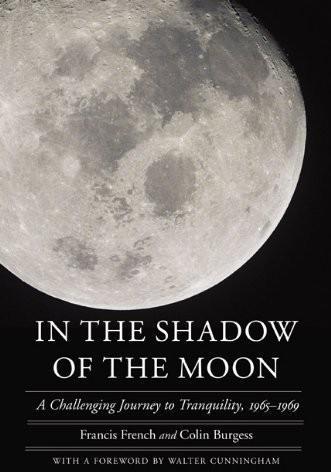
In the Shadow of the Moon: A Challenging Journey to Tranquility, 1965-1969
by
Francis French
,
Colin Burgess
and
Walter Cunningham
Published 1 Jun 2010
And as Jim Lovell told the authors, the rendezvous success was the culmination of a fast and effective process: “On Gemini 4, when McDivitt and Ed White tried to do the rendezvous, they kept circling around, because they didn’t realize the aspects of orbital mechanics, where you retrograde to get up there, and you posigrade to go down—all that sort of stuff. It took a little while for that type of rendezvous to be developed. Gemini 6 and 7 was a real rendezvous—by that time we understood orbital mechanics. We completed the first rendezvous in space.” As for the medical experiments, they had also been very important, but the astronauts were far less likely to enthuse about them.
…
Other people went to test-pilot training—I concentrated on education. I got fascinated with orbital mechanics, and I had some interesting things in my background, but they didn’t really want somebody who hadn’t been in the test pilot business.” Aldrin was assigned to mission planning, and he saw it as an opportunity to advance his ideas in rendezvous theory and put them into practice. As he wrote in his memoirs, it was not always an easy experience for him “translating these complex orbital mechanics into relatively simple flight plans for my colleagues. . . . I saw that most of these guys weren’t really interested.”
…
“Tell him to save the fuel.” In fact, McDivitt had already expended nearly 50 percent of his fuel supply in the futile chase, and the remainder would be needed for the spacewalk and reentry. Grissom passed the message to McDivitt, who concurred. As Grissom would later point out, “the effort did point out that the orbital mechanics involved in rendezvous were a little more involved than had been expected.” Their disappointment did not last long. Just seconds later Grissom relayed a welcome message from Chris Kraft to the crew: “Okay, we’re giving you a GO for your eva at this time.” Though the eva was originally planned for the second orbit, it took McDivitt and White so long to go through the forty-item checklist that Mission Control wisely decided to delay until the third orbit.

Leviathan Wakes
by
James S. A. Corey
Published 14 Jun 2011
” “You were right.” “You prove it?” “Not my job,” Dawes said. “But this might interest you. Automated docking logs for the ship when she left here and when she arrived on Ganymede. She’s three tons lighter, not even counting reaction mass consumption. And the transit time is longer than the orbital mechanics projections.” “Someone met her,” Miller said. “Transferred the gear to another ship.” “There’s your answer,” Dawes said. “Both of them. The riot gear was taken off the station by local organized crime. There aren’t records to support it, but I think it’s safe to assume that they also shipped out the personnel to use that gear.”
…
When they stopped working, he floated down to the personnel deck, strapped into his cot, and tried to sleep. The Rocinante sang him a lullaby of air recyclers and silence. Chapter Twenty: Miller Miller sat at an open café, the tunnel wide above him. Grass grew tall and pale in the public commons, and the ceiling glowed full-spectrum white. Ceres Station had come unmoored. Orbital mechanics and inertia kept it physically where it had always been, but the stories about it had changed. The point defenses were the same. The tensile strength of the port blast doors was the same. The ephemeral shield of political status was all they’d lost, and it was everything. Miller leaned forward and sipped his coffee.
…
If a crew wanted a place to relax, to stretch, to get away from one another for a while, Eros was the port of call. And with the lower docking fees, Eros Station found other ways to soak money from its visitors: Casinos. Brothels. Shooting galleries. Vice in all its commercial forms found a home in Eros, its local economy blooming like a fungus fed by the desires of Belters. A happy accident of orbital mechanics put Miller there half a day ahead of the Rocinante. He walked through the cheap casinos, the opioid bars and sex clubs, the show fight areas where men or women pretended to beat one another senseless for the pleasure of the crowds. Miller imagined Julie walking with him, her sly smile matching his own as he read the great animated displays.

A Man on the Moon
by
Andrew Chaikin
Published 1 Jan 1994
Here it was based not on military rank but how long you had been an astronaut; the Original 7 were permanently first in line. But for the most part, the Nine didn’t have much time to think about when they would fly in space. After ground school with the Original 7 that included jungle and desert survival training and courses on all facets of spaceflight from orbital mechanics to computers, they were swept up in the Apollo whirlwind. Each man was assigned a slice of the massive engineering effort. Conrad drew the enviable task of helping to design the controls and instrument displays for the lunar module, the spacecraft that would actually land on the moon. In the months that followed Conrad found himself standing in a plywood mockup of the lander, surrounded by painted switches and dials, imagining himself flying over a silent, cratered world.
…
Then they fired their engine and headed back to Scott, beginning the long and intricate dance called space rendezvous. As Buzz Aldrin knew only too well, an astronaut flying a rendezvous couldn't use the instincts he'd honed in airplanes. This was a completely different way of flying. Rendezvous was a domain ruled by the arcane statutes of orbital mechanics. A spacecraft in orbit is like a ball bearing whizzing around inside a deep, curved funnel. A ball thrown into the funnel will “orbit” at a height and speed that depends on the amount of energy it has. A ball with a lot of energy will circle at the upper end of the funnel; one with less energy will circle lower down.
…
If the balls are spacecraft around the earth, the funnel becomes the invisible “well” of gravity which all orbiting objects must fight in order to stay in orbit. The closer the spacecraft is to earth, the stronger the force of gravity, and the faster it must go to balance that pull. The farther away it is, the weaker gravity's pull, and the slower the spacecraft travels. From a pilot's standpoint, the analogy makes clear the most important rule of orbital mechanics: Height and speed are inextricably linked. To slow down, the spacecraft must be kicked into a higher orbit (by adding energy with a burst from a rocket). Conversely, speeding up requires dropping into a lower orbit (by using the rocket as a brake). A pair of astronauts who start out behind their target must lower their orbit until they catch up, but not for too long, or they will overtake it.
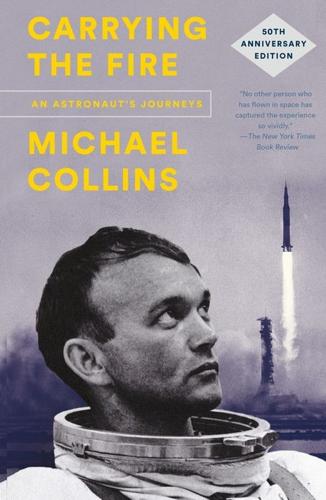
Carrying the Fire: An Astronaut's Journeys: 50th Anniversary Edition
by
Michael Collins
and
Charles A. Lindbergh
Published 15 Apr 2019
For six months, I had been training specifically for Gemini 10, with its peculiar EVA and rendezvous problems, but this period had of course been preceded by six months of Gemini basics during my tenure as backup for Gemini 7. Was the answer, then, one year? But how about all the Basic Grubby Training, with its emphasis on orbital mechanics, or the jungle training, or centrifuge, or zero-G airplane, or pressure suit work? Could I omit as training my experience in the test pilot and research pilot schools? Or what I learned test flying at Edwards, or ejecting from a smoke-filled cockpit years before? Or the math I learned in school, the foundation upon which orbital mechanics was built? I just don’t know how long it takes, except that it had taken me thirty-five years to reach crew quarters at Merritt Island, Florida, and on July 17, 1966, I felt ready.
…
To complicate matters, the speeds and distances involved in the orbital situation made the pilot’s eyeball useless a great deal of the time, and gimmicks such as radar and computers have to be carried on board and operated in conjunction with a whole bevy of geniuses on the ground, who in turn are armed with their own, more powerful, radars and computers. When our minds became saturated with the equations and other mathematical gibberish pertaining to all this—“orbital mechanics,” it was called—the ARPS staff would have the good sense to whisk us away somewhere for a breather. Once we visited a couple of aerospace contractors’ factories, where not much was being built but where advanced design groups were delighted to explain to us their far-out plans for zinging off to Mars using atomic power, or for building a huge machine that would fly through the atmosphere, scooping up and liquefying the propellants required to enable it to zoom up into space.
…
I felt a twinge of envy (jealousy?) as the great flight unfolded. They had a minor problem at the very beginning as Jim McDivitt allowed the Titan to drift too far away and then had difficulty catching it again, a graphic illustration if there ever was one of the tricky nature of our old friend orbital mechanics. Without precise computerized catchup instructions, it was clear that Jim was going to waste a lot of gas catching the empty launch vehicle, so the attempt was called off, and Ed White’s EVA became a separate event. My wife had gone to the Cape with Susan Borman (Frank was McDivitt’s back-up) to watch her first launch.
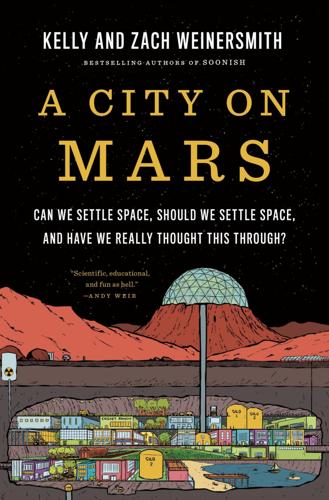
A City on Mars: Can We Settle Space, Should We Settle Space, and Have We Really Thought This Through?
by
Kelly Weinersmith
and
Zach Weinersmith
Published 6 Nov 2023
If from time to time we talk about myths of the American frontier or legal theories the United States is apt to favor, it’s because those are the myths of the current hegemonic power in space. In 1976, as part of the Bogota Declaration, eight equatorial nations claimed territorial rights to geostationary orbit, which by the nature of orbital mechanics is perpetually over their heads. Geostationary orbit is valuable, and the idea was that these less-developed nations ought to get paid rent by anyone using their space. But, although to this day the Colombian constitution asserts special rights to a slice of that orbit, the claim has largely been ignored by the international community.
…
This suggests that pretty early on in the settlement process you’ll want to be sure you have psychiatric care, medicine, and for the particular case of people who’ve become dangerous to themselves, you may need some way to safely confine them until the problem has been solved or they can be moved back to Earth. This will not be a trivial problem—thanks to the unforgiving nature of orbital mechanics, in the worst-case scenario, confinement would be over a year, followed by a launch to orbit and a six-month transit to Earth. This is something that could be handled in a large-enough settlement that included specialists and appropriate facilities. If it happens in a one-hundred-person outpost, you’ve got a real problem.
…
As one author put it, “Thus, housing became the method of controlling workers par excellence.” This suggests that there’s a deep structural dynamic here—when your employer owns your housing, they’re apt to use it against you at some point. In space, you can’t kick people out of their houses unless you’re prepared to kill them or pay for a pricey trip home. On Mars, orbital mechanics may preclude the trip even if you’re able to afford it. In arguing with space-settlement geeks, housing concerns are often set up as binaries—“Look, they’re not going to kill the employees, so they’ll have to treat them well.” In fact, there’s a spectrum of bastardry available. A company-town boss on Mars could provide lower-quality food, reduce floor space, restrict the flow of beet wine, deny you access to the pregnodrome.
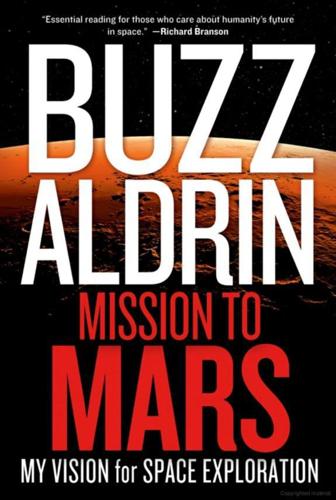
Mission to Mars: My Vision for Space Exploration
by
Buzz Aldrin
and
Leonard David
Published 1 Apr 2013
A Project Red Rocks fact sheet from the firm suggests: “Sending astronauts to Deimos will demonstrate key technologies that will be needed for subsequent human Mars landings.” The best near-term opportunities to send humans toward Mars, based on Project Red Rocks, would be in 2033 and 2035, thanks to a melding of orbital mechanics, propulsion needs, and a lessening of crew exposure to cosmic radiation. For a 2033 mission, according to company experts, equipment and supplies can be launched in January 2031 and deployed to Mars orbit ahead of time. A Deimos-bound crew would then say goodbye to Earth in 2033, spend 18 months orbiting Mars, and then return to their home planet in November 2035.
…
If life on Mars exists or existed within the last ten million years, a mission to Phobos could yield the first evidence of life beyond Earth. Melosh led a team chosen by NASA’s Planetary Protection Office to evaluate if a sample from Phobos could include enough recent material from Mars to carry viable Martian organisms. Combining their expertise in impact cratering and orbital mechanics, Melosh and his associates ran a series of computer simulations. Their findings support the view that Phobos would have been on the receiving end of Mars material, flung out by large impact events that have happened on the planet over the past ten million years—a relatively recent event in geologic time, in other words.

Moonshot: The Inside Story of Mankind's Greatest Adventure
by
Dan Parry
Published 22 Jun 2009
In May 1961, Alan Shepard became the first American to reach space, his Mercury capsule being carried to an altitude of 116 miles by a Redstone rocket. During this and subsequent Mercury flights, the astronauts' work in weightlessness exceeded all expectations. Encouraged by their early success, NASA began to plan for more complicated missions in preparation for the ultimate ambition, a journey to the Moon. Such a flight would rely on orbital mechanics, lunar trajectories, docking procedures and machinery complex enough to safely carry a crew nearly a quarter of a million miles and back. More technically complicated than anything achieved by man before, such a mission would require years of studious preparation. Notwithstanding Wolfe's adulation of heroics, only those with the bright stuff would be up to completing such an adventure.
…
By the time Gemini 5 reached orbit two months later, new training techniques had been developed and the spacecraft was fitted with a radar system. The crew successfully flew from one point in space to another, demonstrating for the first time an ability to reach a pre-determined position in orbit. Only through practical experience of orbital mechanics was NASA able to get to grips with the difficulties of rendezvous. McDivitt had expected to catch up with his target by firing his engine, with the intention of going faster. Actually the burn simply pushed him into a higher orbit, which left him travelling more slowly relative to anything at a lower altitude – like a spent rocket stage.
…
Alongside movie stars and music legends, spacemen were offered up to an admiring public by reporters who described them as dashing adventurers. Astronauts were the real-life embodiment of the space-travelling supermen of science fiction, the type of guys who would readily throw you a smile and a salute on their way to ridding exciting new worlds of bug-eyed monsters. The public didn't care about orbital mechanics and P52 platform alignments, they wanted to know what astronauts had for breakfast. Some liked the attention. Others, among them Neil Armstrong, enjoyed press adulation as much as engine failure and considered this aspect of the job a necessary evil. There was a feeling within NASA that, as a government agency spending billions of public dollars, the public were owed something in return.
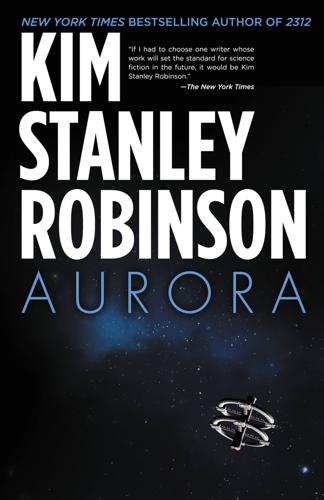
Aurora
by
Kim Stanley Robinson
Published 6 Jul 2015
Except previously, instead of going into hibernation to escape their fate, at least temporarily, they simply starved. Food mattered then, and it still does. Fuel. Gravity drags within the solar system, caused by close approaches to the sun and planets: each of these would have a negligible effect, but if there were enough of them, sequenced… this becomes a question of orbital mechanics, navigational finesse, and the remaining fuel that would be needed for maneuvering, and the strength of decelerative forces while near gravitational bolides. Complex calculations would be required to set trajectories, calculations time-consuming even for a quantum computer. And for many computations a quantum computer is no faster than a classical computer.
…
Only certain algorithms that can exploit qualities of superposition exhibit much faster computational times, as in the famous example of Shor’s algorithm for factoring a thousand-digit number, which a quantum computer can solve in twenty minutes while it would take a classical program ten million billion billion years. Unfortunately, orbital mechanics are not in this category of calculation, although there are some elements of it that can be calculated advantageously by quantum computers using the Hummingbird algorithm. We will devote a hundred petaflops to modeling the problem and see what the results suggest as to feasibility and likelihood of success.
…
Our return therefore continued to be controversial, with responses ranging across the human emotional and analytical spectrum, from rage to disgust to joy, from complete incomprehension to insights we ourselves had not achieved. We did not try to explain ourselves. It would have taken this narrative account just to start that process, and this was not written for them. Besides, there was no time to explain, as there remained still a lot to calculate in the orbital mechanics involved in very rapidly crisscrossing the solar system. The N-body gravitational problem is not particularly complex compared to some, but the N in this situation was a big number, and although usually one solved it as if only the sun and the largest nearby masses were involved, because this got an answer practically the same as solving for the entire array of the thousand largest masses in the solar system, the differences in our case would sometimes be crucial for saving fuel, which was going to be a major concern as our peregrination went on.

Come Fly With Us: NASA's Payload Specialist Program
by
Melvin Croft
,
John Youskauskas
and
Don Thomas
Published 1 Feb 2019
His first reaction, as he recalled decades later, was “Wow! Flying airplanes is a lot of fun, so if the air force is going to pay me to fly airplanes, I’ll go do that!” But even with that new enthusiasm, he was still committed to learning all he could about the engineering of rockets and the complex dynamics of orbital mechanics. Honored as a distinguished graduate in the class of 1971, Payton immediately set off for Purdue University following his commissioning in the air force. “I majored in astronautical engineering and then got a master’s degree at Purdue right after graduation from the academy,” he shared. Upon completion of his graduate studies, Payton was assigned to Craig Air Force Base in Alabama, where he would pursue his newly discovered passion for aviation.
…
The head of the aerospace engineering department had both of us in his office trying to explain what was going on that this guy was flunking an honors student. I came into the program as an honors student, and I literally got a D in the first course in aerodynamics. And God’s honest truth, I think the reason they passed me was because we all knew I was going into the space program and that spacecraft dynamics, orbital mechanics, which is what I would wind up doing for a career, had nothing to do with fluid dynamics. Still drawn to the physical sensations of flight while at Penn State, Cenker spent his free time launching himself into the air by any means possible. He worked out on the pool’s diving boards and introduce himself to bouncing and flipping high above the gym’s trampolines, experiencing a precious few seconds of stomach butterfly–producing weightlessness.
…
Because I was realistic enough to know that you never know when something would come up that you wouldn’t make it in flight school. With the option of joining the military now far less attractive and still desperate to get out of the Westinghouse job, Cenker accepted an apprenticeship with his old advisor at Penn State working on spacecraft dynamics and orbital mechanics. Cenker would earn his masters in aerospace engineering by 1973 and was again having difficulty finding a job appropriate for his skills. Commiserating with his professor one day, he was asked if he had looked at RCA. “RCA builds TV sets!” Cenker responded incredulously. “I’m going to go from nuclear reactors to TV sets?”

Through the Glass Ceiling to the Stars: The Story of the First American Woman to Command a Space Mission
by
Eileen M. Collins
and
Jonathan H. Ward
Published 13 Sep 2021
When we woke up on flight day four, the R1U thruster was still leaking a bit, although not nearly as badly as it had been before. Houston told us the wonderful news that we could approach within four hundred feet of Mir. Once we reached that point, flight controllers would decide whether we’d continue our approach or if we’d fly around Mir, staying four hundred feet away. The laws of orbital mechanics prevent you from just pointing your ship at your destination and firing the engine like they do in movies. You’d completely miss the target! Rendezvous in space is a slow, deliberate, careful dance with no sudden moves. There are several different methods in which a vehicle like the space shuttle can rendezvous with a big target like Mir in orbit.
…
We were testing a sensor ultimately destined for the Automated Transfer Vehicle, a European Space Agency resupply ship for the ISS. I had to back us down the minus-z axis, straight down toward the Earth. I paused for a few minutes when we were at distances of thirty meters, ninety meters, and four hundred fifty meters below Mir. The laws of orbital mechanics took over, and we gradually drifted farther away without having to fire our thrusters. Soon, Mir was just a flashing star off in the distance. Looking Out the Window STS-84 was far more relaxing and fun for me than STS-63. After learning to perform many of my duties on my previous mission, I was more efficient now and could finish my tasks faster.
…
No one knew how long it would take to correct the fuel tank sensor issue. Our window of possible launch dates extended to July 31. One requirement for returning to flight was that we launch and separate from the external tank in daylight so we could photograph the tank to look for foam loss. Orbital mechanics precluded our launching in daylight between August 1 and September 8. Assuming engineers immediately fixed the problem, our next launch date was three days from now. But we might wait as long as eighteen days, throughout which we would remain in quarantine. On July 15, the launch date slipped until “at least late next week.”
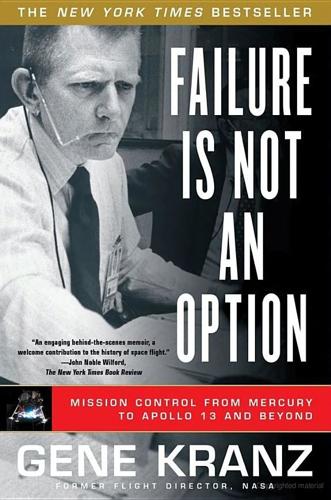
Failure Is Not an Option: Mission Control From Mercury to Apollo 13 and Beyond
by
Gene Kranz
Published 7 Jan 2000
To balance the force of gravity, a spacecraft in a lower orbit (no matter how slightly lower) must travel faster than one in a higher orbit. Thus, by slowing down, McDivitt was descending and going faster, pulling away from the booster’s orbit. In the trajectory world you have to reset your mental gyroscope; orbital mechanics are counterintuitive, particularly for someone used to flying an aircraft, which follows an entirely different set of rules. I realized then that orbital mechanics was something else I needed to learn a lot more about—particularly if I wanted to be ready for the far more complex orbital maneuvers involved in a rendezvous! While McDivitt was chasing the booster, Ed White did the best he could to complete the preparation for the EVA, which was scheduled to start over Hawaii at the end of the second orbit.
…
Coming into daylight, the booster was now over three miles away. McDivitt checked his fuel quantity, conferred with Kraft, and, observing the cutoff limits, terminated the attempt to rendezvous with the booster. As I sat in the MCC, I was baffled by the problems. Unwittingly, Jim had kicked open the door to the mysteries of orbital mechanics, and I had a new respect for Lunney and Llewellyn, who quickly mastered the mysteries of trajectory control. After the mission we reconstructed McDivitt’s maneuvers. Following separation he was ahead of the booster in orbit and as he thrust toward the booster he was performing a retrograde (slowing down) maneuver.
…
Morris, Owen Morse code Moyers, Bill MSFC see Marshall Space Flight Center (MSFC) Muehlberger, William Mueller, George Myers, Dale Myrtle Beach, South Carolina Nance, Bob NASA see National Aeronautics and Space Administration (NASA) NASA Alumni League National Advisory Committee for Aeronautics (NACA) National Aeronautics and Space Administration (NASA) cancellation of final Apollo missions civilian program creation of future of hierarchy joint venture with Russians legal staff management news policy as resource time problem see also Space Task Group National Commission on Space National Defense Education Act National Space Act of 1958 Navigation systems Nellis Air Force Base Nieman Nigeria tracking site Nikolayev Nixon, Richard Noa (ship) Norsworthy, Milt North American Aviation (Co.) Odyssey O’Neill, Gerard O’Neill, John Operating procedures Operations and procedures officer Orange Team Orbit trajection propagation Orbital mechanics Orbital missions Osan Air Base Osgood, Cathy Pacific Airmotive Page, George Paine, Thomas Parks, Oliver Parks Air College Passive thermal control (PTC) maneuver Patnesky, Andrew Patrick AFB Paules, Gran Pavelka, Ed Perssons, Al Peters, Bill Petrone, Rocco Philco (Co.)
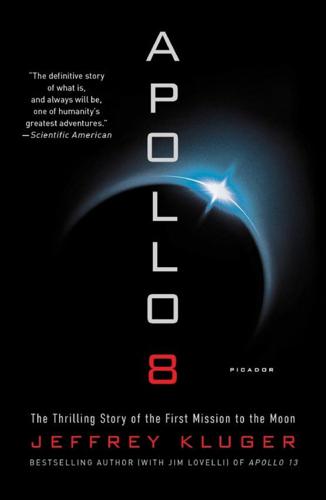
Apollo 8: The Thrilling Story of the First Mission to the Moon
by
Jeffrey Kluger
Published 15 May 2017
The two-man Gemini hadn’t even been fully built yet, the Titan booster that would carry it to orbit had not yet been man-rated, and a lot of work needed to be done before anyone would be taking any rides aboard either of them. Yes, there would be plenty of basic training in centrifuges and simulators. The astronauts would spend endless hours in classrooms studying orbital mechanics, lifting bodies, and zero-g navigation, to say nothing of survival training on the ocean and in the deserts and anywhere else an errant landing like Carpenter’s might deposit a pair of men. But that still left extra hours in the week, so all of the new recruits would be assigned a specialty, thus giving them a direct hand in developing the hardware, software, and flight procedures on which they would be banking their lives.
…
For Kraft, there could be no such solitary contemplation. He needed a real committee—a small, trusted group of deputies—who could work with him behind tightly closed doors. The moment he returned to his office, he summoned a handful of colleagues, including two key lieutenants: Bill Tindall, an orbital mechanics expert who would effectively manage the physics of any lunar trip, and John Hodge, the director of flight planning, who would write the mission script. The team arrived, and Kraft told them what Low had proposed. He was reassured to see that none of them responded with wide eyes or a flat no.
…
Aaron, John Agena spacecraft explosion of Agnew, Spiro Air Force Air Force Institute of Technology Air Force Special Weapons Center airglow Aldrin, Buzz American Football League Anders, Bill Apollo 8 bumped to moon shot and awards and honors background of Borman’s illness and chatter on flight and Christmas in space and crater named for distance record and early orbit and Earthrise photo by family and later career of launch preparations and lunar orbit entry and lunar orbits and motion sickness and photographs by prelaunch and liftoff and recovery and reentry and return flight from moon and sleep and SPS and TEI and third stage separation maneuver TLI and TV from space and Anders, Eric Anders, Valerie Hoard Anders Crater Apollo 1 design and quality problems of explosion of oxygen and preparations for Apollo 4 Apollo 5 Apollo 6 Apollo 7 Apollo 8 awards and honors and blackouts behind moon and Borman crew bumped up to Borman’s illness on flight broadcast chatter Christmas in space and circumlunar vs. lunar orbit and command and service module computer and coolant system crew selection decision to turn into moon shot distance traveled by early Earth orbits after liftoff equipment bay families and fan mail and first planned as Earth orbit flight hatch improved launch party and visits launch timing launch window set life-support systems liftoff Lindbergh and lunar gravity entered by lunar mission set lunar orbit insertion lunar orbits and maneuvered inaccurately in orbit mid-course correction and Mission Control and mobility in capsule motion sickness and navigation of orbital mechanics and parachutes deployed photographs and preparations for reentry and retrofire and return flight from moon Saturn V and sleep and Soviet observations of splashdown and recovery and SPS and sunlight and tapes and TEI and path to Earth third stage separation maneuver thrusters TLI and path to moon toileting in TV broadcasts from Van Allen belts and view from view of Earth from lunar orbit view of moon in lunar orbit windows and Apollo 9 Borman crew bumped to Apollo 8 from Collins replaced by Lovell planned as Apollo 8 rerun post-Apollo 8 mission Apollo 10 Apollo 11 Apollo 12 Apollo 13 Apollo 14 Apollo 15 Apollo spacecraft.
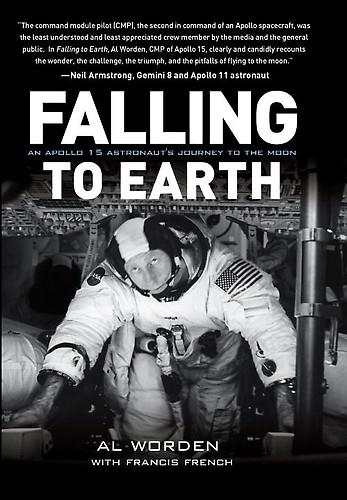
Falling to Earth
by
Al Worden
Published 26 Jul 2011
Most people in the class went on to work with ballistic missiles, but other pilots like me hoped to go into high-performance flight work. I wanted to learn as much as I could about subjects like control systems, instrumentation, and rocket propulsion. We did a lot of space-related work, which was important for both ballistic missiles and manned spaceflight careers. We also studied a great deal about trajectory analysis, orbital mechanics, and rocket propulsion. I didn’t plan to become an astronaut, but nevertheless I learned much of what I’d need for the job. I also thought about my air force career beyond being a pilot. Any good air force officer doesn’t obsess about flying. The air force is a management organization, and I looked forward to steady progression through the ranks.
…
Worse, the primary purpose of his Aerospace Research Pilot School was to breed future astronauts, a club he could never join despite being the world’s most famous test pilot. Still, no matter how I felt about him personally, I was grateful that Yeager had pulled me right into studying and teaching techniques designed to train future spacefarers. We learned all about orbital mechanics and rocket flight in the classroom, then practiced zoom maneuvers in the air in F-104 aircraft, appropriately named Starfighters. Wearing full pressure suits, we flew trajectories similar to the flight path of the X-15 rocket plane, which could reach the fringes of space. I’d start out at thirty thousand feet, dipping down slightly to pick up extra speed, and then once I was racing over Mach 2, I would pull up and coast to the edge of the atmosphere.
…
Years later, when we were both out of the program, I often worked with Al on charity events, and we became much friendlier. But when I began at NASA, I thought Al Shepard was a real jerk. Whatever the office politics, none of my group would fly in space for a while. First, we had to train. We spent most of our first year in classes, designed to teach us the basics of orbital mechanics, trajectories, rendezvous, docking, and other skills. The trouble was, our teachers were giving us only the practical user information about how the spacecraft and rocket parts worked. We were learning how to operate equipment, but there was no discussion of the theories or engineering behind them.

The Last Man on the Moon: Astronaut Eugene Cernan and America's Race in Space
by
Eugene Cernan
and
Donald A. Davis
Published 1 Jan 1998
It was easy to feel somewhat insecure in this group of pilots. What could I say: I’d had two WestPac tours and was now studying in Monterey? I felt my chances of being chosen were pretty slim. They hit us with another blizzard of paperwork, which now included questions about space travel and orbital mechanics. Although I didn’t know much about those subjects, I wrote essay-length answers in longhand to every query. If they were looking at how a candidate handled the unknown, I must have rated pretty high, for I didn’t know much at all. Then came the personal interviews, and for the first time I met real astronauts, the men from the headlines.
…
Time ceased to have meaning and Earth hours became like minutes as we hopscotched through time zones and circled the globe every hour and a half. I buried my nose in calculations, figured in data from radar and our primitive computer, then passed the information to Tom, and we edged ever closer to the orbiting bull’s-eye. THE LAWS OF ORBITAL mechanics are almost as strange as the regulations of the Internal Revenue Service. A reader might logically ask why we didn’t just zoom right up to the proper altitude, burn to maximum speed and catch the target. That is an Earth solution and doesn’t hold true in space. The fact is that the further away something is from the Earth, the longer it takes to circle it.
…
The rocket engine fired exactly when it was supposed to, and we were pressed against our couches, counting off the passing eternity of seconds. A stop at any point short of a total burn and the game was over. Two minutes and forty-four seconds later, Charlie Brown shot out of lunar orbit. The TEI was perfect and we were grasped by the fist of orbital mechanics, beginning the long fall back to Earth at an incredible and gathering speed. DURING THE NEXT THREE hours, we watched the Moon change from being so big that it was all we could see to something the size of a basketball, while Earth grew correspondingly larger. “You’re coming right down the fairway,” Mission Control called up.
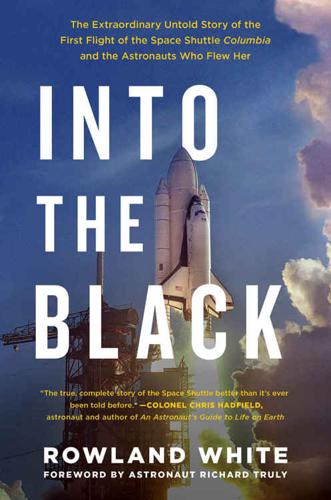
Into the Black: The Extraordinary Untold Story of the First Flight of the Space Shuttle Columbia and the Astronauts Who Flew Her
by
Rowland White
and
Richard Truly
Published 18 Apr 2016
Then, as he and his fellow students moved from test-flying to space training, there was one machine which, while it may have failed to impress the USAF as an interceptor, was practically tailored to the requirements of training Air Force astronauts: the Lockheed F-104 Starfighter, the only aircraft ever to have simultaneously held the world records for both speed and altitude. On the ground, the class studied orbital mechanics, the mathematics of calculating satellite movements, biomedicine, spacecraft design and aerothermodynamics. They also “flew” the school’s ground-based GPS T-27 simulator, in which they could practice orbital maneuvering, rendezvous and docking in a facsimile of a spacecraft. It seemed to be doing the trick.
…
Commander and pilot divided responsibilities. At Houston, Haise focused on rendezvous procedures and proximity operations needed to orbit so close to the space station. Without a rendezvous radar on board the orbiter, Haise had to plan the rendezvous with Skylab through old-fashioned calculation—a combination of orbital mechanics and dead-reckoning navigation in which a single degree of inaccuracy would lead to a separation between two orbiting objects of a mile in just twelve seconds. If that wasn’t complicated enough, the only way to catch an object orbiting ahead is to slow down; speeding up will only have the effect of moving you into a higher orbit, and farther away from the object that you’re trying to run down.
…
Outside, postlaunch pad inspectors would, as soon as it was safe to do so, scour the launch site, flame trenches and surrounding area for debris. • • • The soft acceleration from a second, shorter 44-second burn from the two orbital maneuvering rockets circularized Columbia’s orbit at a touch over 132 nautical miles above the Earth’s surface. While orbital mechanics dictated that they would never meet, they’d now joined a pair of Soviet cosmonauts who’d been in space for a month already, circling the globe at a steeper inclination of 51.6 degrees in their Salyut 6 space station. Crippen unlocked his helmet and pulled it off, placing it inside a soft drawstring bag before putting it aside.
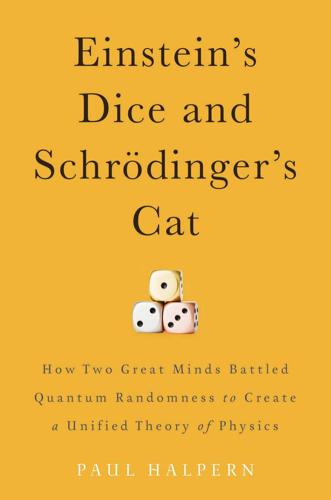
Einstein's Dice and Schrödinger's Cat: How Two Great Minds Battled Quantum Randomness to Create a Unified Theory of Physics
by
Paul Halpern
Published 13 Apr 2015
During his absence, he dispatched Heisenberg to Göttingen to work with Born. Completing what had become a quantum triangle of Munich, Göttingen, and Copenhagen, Pauli shifted north to become Bohr’s assistant. When Heisenberg arrived in October 1922, Born advised him to focus on variations of Bohr’s theory based on principles from astronomy and orbital mechanics. They worked together on trying to match planetary models with the spectral lines of ionized helium (helium with a single electron), the simplest system beyond hydrogen. In May 1923, Heisenberg headed back to Munich to complete his doctoral program and his final oral defense. Despite Sommerfeld’s excellent theoretical contributions, the emphasis there was still on the practical side of physics.
…
New data about spectral lines were pouring in, with curious patterns suggesting increasingly intricate structures, necessitating more and more changes to existing models. Heisenberg tried in vain to adapt his core model to the novel data. By early 1924, Born began to realize that their efforts to apply a planetary analogy to electrons had failed. Traditional orbital mechanics, combined with quantized energies and angular momenta, simply couldn’t explain how electrons in ionized helium behaved. If helium, a relatively simple system, couldn’t be modeled, what hope was there for understanding all the complex atoms that made up the periodic table? Tossing classical mechanics aside when it came to atoms, Born declared the need for a wholly novel “quantum mechanics.”
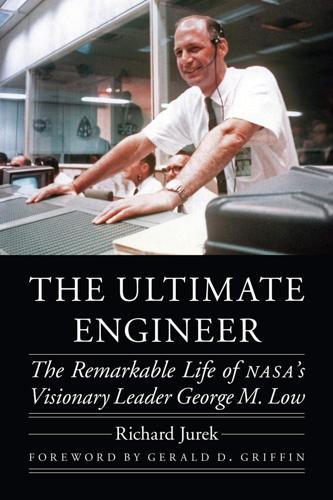
The Ultimate Engineer: The Remarkable Life of NASA's Visionary Leader George M. Low
by
Richard Jurek
Published 2 Dec 2019
Low playing with his motorized erector set, c. 1932–33 4. Low’s father, Arthur 5. Low’s mother, Gertrude 6. Low at age thirteen 7. Low in his military uniform, 1940s 8. Low family farm, c. 1950s 9. Low and Mary R. in Cleveland, 1952 10. Low teaching an advanced course in aeronautics, 1954 11. Low teaching a course on orbital mechanics, 1958 12. Low with President John F. Kennedy at a press conference, 1963 13. Low conducting a press conference during Project Gemini, 1965 14. Chris Kraft, Bob Gilruth, and Low, 1965 15. Chris Kraft and Low in mission control 16. Low with Gen. John P. McConnell, 1966 17. Low and Bob Gilruth inspecting the returned Apollo 7 spacecraft, 1968 18.
…
The Low family farm in Milford, New York, circa 1950s. Courtesy of the Low family. 9. Low and Mary R. in Cleveland in 1952. Photo by Bob Blue; courtesy of the Low family. 10. Low teaching an advanced course in aeronautics at NASA Lewis Research Laboratory in Cleveland in 1954. Courtesy of NASA. 11. Low teaching a course on orbital mechanics at NASA Lewis Research Laboratory in Cleveland in 1958. Courtesy of NASA. 12. Low with President John F. Kennedy, along with astronauts Gordon Cooper and Virgil “Gus” Grissom in front of a Gemini capsule at a press conference at Cape Canaveral, 16 November 1963. Courtesy of NASA. 13. Low conducting a press conference during Project Gemini in Houston, Texas, 16 November 1965.

Apollo
by
Charles Murray
and
Catherine Bly Cox
Published 1 Jan 1989
Third, because things could go wrong at any time in the first few minutes of flight, the site had to border on several hundred miles of uninhabited space down-range—an area so vast that only an ocean would do. Moreover, the ocean had to be to the east of the launching site, because, for reasons of orbital mechanics, it was much more efficient to launch eastward with the rotation of the earth than to launch westward. Also for reasons of orbital mechanics, the closer to the equator the site could be, the better. There were more restrictions. For security reasons, the site had to be in an area under the control of United States. For cost reasons, it had to be within reasonable proximity to the manufacturing facilities that would be producing the launch vehicles and support equipment.
…
The name that was eventually attached to what he did was “Mission Techniques.” Bill Tindall had been in the space program since Mercury days, when he had helped to set up the communications network. In the Gemini program, Tindall had been the man who had figured out how to do a rendezvous in orbit. The mathematics of orbital mechanics and of rendezvous itself were well known (Buzz Aldrin, the Apollo 11 lunar module pilot, had written his M.I.T. dissertation on the mechanics of rendezvous). But no one had applied these theoretical findings to the world of hardware and tracking stations, where it was essential that the ground be able to monitor and control a rendezvous.
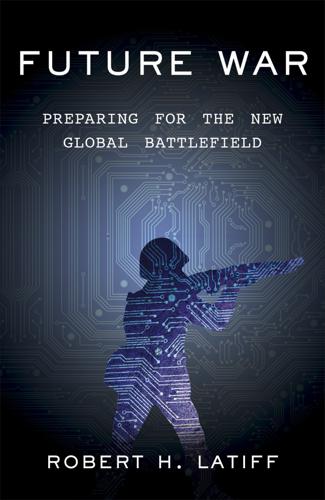
Future War: Preparing for the New Global Battlefield
by
Robert H. Latiff
Published 25 Sep 2017
They generally represent only one side of a conflict and glorify war. They depict unerringly accurate weapons (as do video games) and the morality and righteousness of our cause. Often, in an attempt to dramatize, moviemakers get things wrong. More than once I have had to explain to a senior decision maker that the limitations of orbital mechanics make it impossible to “fly” a satellite to an area of interest to take a picture. Serious scholarly books are written about war and its consequences, but the vast majority of the public ignores them. For decades, the media depicted war as heroic and failed to show its awfulness. Apocalypse Now, Platoon, and other films born of the Vietnam War depicted the insanity and brutality of the war, but focused mostly on the unseemly politics of that conflict.

Digital Apollo: Human and Machine in Spaceflight
by
David A. Mindell
Published 3 Apr 2008
The first report of success heard on the ground was not from the LM but from Collins, alone in the CSM, as he emerged first from behind the moon: ‘‘Listen, babe. Everything’s going just swimmingly. Beautiful.’’ A few minutes later, the LM, nicknamed Eagle, emerged as well, also reporting the successful burn. Now the comparatively pure orbital mechanics would begin to intersect the uncertainties and roughness of the moon. At first Armstrong and Aldrin came in facing down, feet first. This being the first time, they wanted to doublecheck the safety factors by eye. As their elliptical orbit carried them close to the surface, Armstrong and Aldrin sighted landmarks on the ground and timed how long it took them to pass across their window—in tandem with paper charts, these observations provided a way to measure altitude.
…
Strangelove (Kubrick), 12 Crew Exploration Vehicle, 266 Dryden, Hugh, 102, 47 Crockett, Davy, 12 Dryden Flight Research Center, 44, 266 Crossfield, Scott Johnsville tests and, 73 Duke, Charlie Apollo 11 and, 218, 222–226 pilot role and, 80 X-15 and, 43, 49–51, 58, 61, 63 Cunningham, Walter, 177, 264 Apollo 16 and, 250, 255 Duncan, Robert ‘‘Cliff,’’ 139, 212–213 Dyna-Soar program, 68, 70–73 Curtiss Jenny, 10 Curtiss-Wright, 30 Eagle lunar module Cybernetics, 15, 36, 40 Aldrin and, 217–232 Cybernetics (Wiener), 36 Armstrong and, 217–232 BURNBABY and, 218 Damping, 58–61, 79, 81 computer alarms and, 221–232 Datamation magazine, 232 critical nature of landing, 7–8 Dead stick landing, 48 DELTAH and, 221, 223, 229, 232 Death Star, 15 DSKY unit and, 218, 223, 229–231 Decision points, 103 extra velocity of, 220–221 DELTAH, 201, 221, 223, 229, 232, 237 fuel issues and, 223 Descent propulsion system (DPS), 190 Design. See Engineering high-gain antenna issues and, 218 landing point designator and, 223–225 Dick, Philip K., 13 low gate and, 224 Digital autopilot, 139–142 lunar landing of, 1–8, 217–226 Digital Computation group, 127 mascons and, 220–221 Digital Development Group, 98, 127 orbital mechanics and, 217–218 Digital differential analyzer, 98 pitch over and, 220–221, 229 Dihedral, 33 powered descent initiation and, 222–223 Display and keyboard (DSKY) unit, 218, 266 Apollo 12 and, 237 primary navigation and guidance system (PNGS) and, 218, 220, 230–231 Apollo 14 and, 245 radar issues and, 227–232 342 Eagle lunar module (cont.) reaction control system (RCS) and, 223, 226 simulators and, 222, 227–228 touchdown site of, 226 Index reliability and, 127–133 sensing wind direction and, 25 Society of Experimental Test Pilots (SETP) and, 17–19 ECLIPSE, 151 software and, 145–180 (see also Software) Edwards Air Force Base, 17 Space Task Group (STG) and, 74–77 Flight Research Center (FRC) and, 44, 46, 90, 210, 266 Stability and Control group and, 27–28 (see also Control; Stability) X-15 and, 43–44, 48 Eight ball, 159, 161, 194–195 stick force per g and, 27 supersonic flight and, 32–36 Eisenhower administration, 95 systems, 36–41, 98 (see also Systems Ejection seats, 18 Electrical noise, 2–3 Electronic Design magazine, 232 engineering) Wright brothers and, 22–23 X-15 and, 45–63 Ellul, Jacques, 12 Engle, Joe, 49, 257, 265 Engineering, 14 ENIAC computer, 98 age of systems and, 36–41 B-2 stealth bomber and, 266–267 Enos (chimpanzee), 81 Escape capsules, 18 black boxes and, 34–36 Evans, Walter, 33 cockpit controls and, 24–29 Exceptional Service Medal, 240 computer development and, 123–143 (see Executive program, 149 also Computers) Explorers Club, 271 Cooper-Harper rating scale and, 31–32, 186 Extra vehicular activity (EVA), 83, 268–269 culture change in, 169–173 Eyles, Don, 176, 189–190, 222, 244, 261 display and keyboard (DSKY) unit and, 165– 169 F-80 Shooting Star, 45 feedback systems and, 33–36 F-104 Starfighter, 45 flying qualities and, 26–28 Faget, Max, 44, 75, 136, 214 frequency response and, 33–34 Failure Is Not an Option (Kranz), 249 G&N System Panel and, 148–149, 168–169 Fairchild Semiconductor, 99, 125–126, 133 gimbal reliability and, 119–121 Falcon, 252 human interface and, 160–166 Faster-and-higher goal, 44 instrument flying and, 24–26 Johnsville tests and, 70–72 Federal Aviation Administration (FAA), 40 Feedback systems, 26.
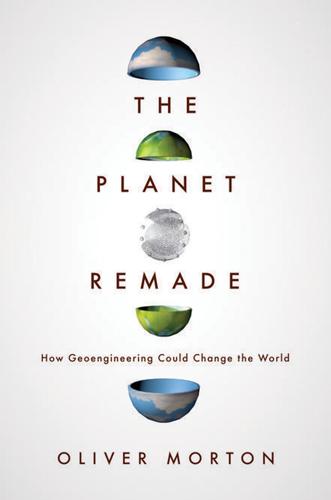
The Planet Remade: How Geoengineering Could Change the World
by
Oliver Morton
Published 26 Sep 2015
Like the geoclique, its common interest was spiced up by scientific and political differences, as well as supported by friendships. It had dominant personalities, but after the death of Gene Shoemaker no clear leaders. Like the geoclique, it was essentially interdisciplinary, made up of practitioners of observational astronomy and government policy; experts in the design of space missions, in orbital mechanics and in the physical properties of asteroids; and students of the impact history of the Earth and other planets and of the effects of nuclear weapons. As in the geoclique, almost all these people had other research interests that took up most of their time; later on in the process some people were funded to work specifically on the problem, but up to the late 1990s it was hardly anyone’s primary job.
…
There are various other ways it could be pushed and pulled around, perhaps using nothing more troubling than the pressure of sunlight. Such gentle pushing is plausible not only because the asteroids in question are small ones, but also because a better understanding of some of the subtleties of orbital mechanics has opened up strategies where the Earth’s own gravity amplifies almost trifling changes into deflections worth making – a very Archimedean lever indeed. The bad news is that this brings up a ‘winners and losers’ problem which provides another echo of geoengineering debates. If an asteroid is going to hit the Earth, it is going to hit a particular spot on the Earth.
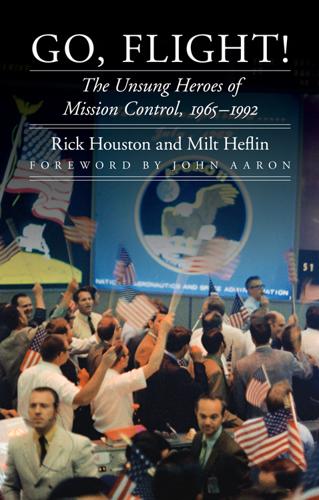
Go, Flight!: The Unsung Heroes of Mission Control, 1965-1992
by
Rick Houston
and
J. Milt Heflin
Published 27 Sep 2015
In the early 1960s, there was no preexisting knowledge base on how to go about getting up to speed in the human spaceflight business. “If you had a question about something, if you didn’t know an area, you couldn’t go to a library and get a book. There was no book,” Fendell said. “There was no training program. There was no workbook for someone like me who didn’t know orbital mechanics from a frickin’ hole in the ground.” That meant when Fendell needed to better understand something, he had to go find somebody to explain it to him. It was hard enough to comprehend the complexities of building a human spaceflight program from scratch, but just imagine what it must have been like to be in Fendell’s shoes in those days.
…
If working as a GNC meant working at NASA and in mission control, that was absolutely fine with Gerry Griffin. The native Texan was a little bit older and had experience in a control room—albeit it had been for an unmanned vehicle—during his stint at General Dynamics. Although he had never had any courses in orbital mechanics, space systems, or anything of the sort, he took to the GNC assignment with gusto. Being a flight controller in the MOCR was like being in the backseat of a jet fighter in the air force. The technical background had to be there, and so did a couple of other very important factors—confidence and not being afraid to make decisions.
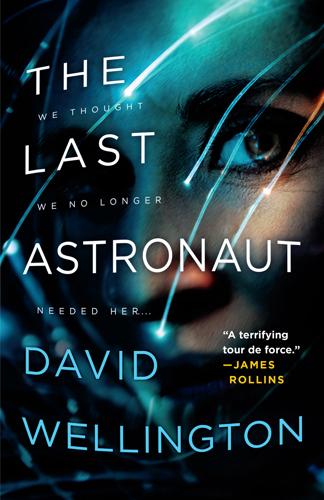
The Last Astronaut
by
David Wellington
Published 22 Jul 2019
“It’s decelerating,” he said. “Spontaneously. It’s spontaneously decelerating.” Sunny had taken a pretty big risk, coming to NASA with this. He had hoped to talk to one of its scientists, not an administrator. His only hope now was that this sunburned bureaucrat had enough of a background in orbital mechanics to get the point. McAllister didn’t stand up. His eyes didn’t bug out, and he didn’t gasp for breath. But he did reach up and scratch the side of his nose, as if he was giving Sunny’s outburst a little bit of thought. Finally he said, “All right. Maybe there’s something we can do.” Maybe—maybe he did get it.
…
“NASA says they were tracking them this whole time, but didn’t expect them to come within a thousand kilometers of our position,” she said. “They didn’t know what was happening until it was too late to give us a warning.” “How close did they get to us?” Rao asked. “About sixteen kilometers.” Jansen shook her head. They’d all had some training in orbital mechanics. At their current velocity, that kind of separation between spacecraft was dangerously close. “So they intentionally changed their course to buzz us.” Hawkins nodded significantly, as if the commercial spaceflight group had just declared war on him personally. “It’s part of the corporate culture over there,” Stevens pointed out.
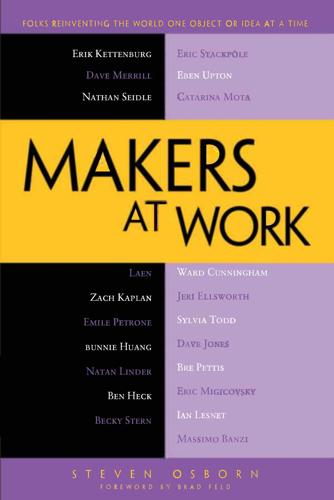
Makers at Work: Folks Reinventing the World One Object or Idea at a Time
by
Steven Osborn
Published 17 Sep 2013
So I went to a conference with some people in my club, a CubeSat conference, and that’s where I met these people from NASA. At the end of the conference, they ended up giving me a job offer. They said I could come intern at their Small Spacecraft Division at Ames Research Center. So I did that for a few years. The biggest project I did at Ames was I designing and building a passive aerodynamic de-orbiting mechanism. It was this little device that had two metal plates and some material between them. When the satellite was released from the launch vehicle, this thing would expand by spring power and increase the surface area of the satellite, which would change its ballistic coefficient so that its orbit would deteriorate faster than normal.
…
See Upton, Eben Raspberry Pi projects Robotic Systems Lab S Safecast Santa Clara University Schacht, Keith Seidle, Nathan Arduino cash death CNC/3D printer rentals CP/M 38 Creative Commons Dangerous Prototypes DARPA Grand Challenge employee of Winter Olympics Google beerware GPL or MIT GPS logger Internet of Things Kickstarter hardware projects LCD display LED Maker Faire microcontroller national tour open-source hardware Parallax BASIC Stamp program calculator games SPARC International TI calculator games venture capital voice amplification Shapeoko Shapeways Shenzhen Sifteo Virtual Machine Silicon Graphics Smart Dust equipment Space Odyssey project SparkFun Electronics. See Seidle, Nathan Stackpole, Eric Aquarius Undersea Lab background CubeSat satellites aerodynamic de-orbiting mechanism Ames Research Center CubeSat Team SJSU design robotic submarine Robotic Systems Lab space exploration Hall City Cave ideological level Kickstarter project MATE NASA OpenROV accessible adventure (AA) business reason daily discoveries (DD) drawing and design Hall City Cave HomePlug adaptor intense innovation (II) internet control missions ongoing technical challenges patent issue proprietary protocol SCINI open-source story space satellites TechShop membership Stern, Becky accelerometer/gyroscope aesthetics and technology Arduino projects biosensing Internet of Things project botanical plant business models CAD files CNC titanium ring creative director 3D fashion 3D objects e-textiles fabric types FAT lab FLORA project FLORA sensors giant plush pillow Google+ Graffiti Research Lab gravitational pull hackerspaces list intellectual property Internet communication coding Kickstarter knitting needle collection Kraftwerk video LEDs and basic programming license little crafting knowledge and craft/sewing instruction local community Making Wireless Toys methane sensor nightlight/switch online and sharing tutorials Pac-Man animation parents activity PIC chips project longhaul Raspberry Pi and Arduino Raspberry Pi projects resources online school, Arizona Space Odyssey project specialized tools and equipment technical innovation to learn visual effect wearable electronics wearable LED suspenders Submersible Capable of under Ice Navigation and Imaging (SCINI) Super Awesome Mini Maker Show Symbolic Systems T TED Fellows Program Thief river falls Thingiverse Tindie.

2312
by
Kim Stanley Robinson
Published 22 May 2012
So it was a little bit futile to turn them off only for certain conversations. Which meant that it was all right for her to say “Pauline, if someone had calculated the trajectory of an impactor to hit Terminator smack on and destroy it, but they forgot to include the relativistic precession of Mercury in their calculation and only used the classical calculus of orbital mechanics, how far would they miss by? Assume the impactor was launched from the asteroid belt a year earlier. Try a few different launch points and trajectory courses and times, both with and without the relativity equations for the precession.” Pauline said, “The precession of Mercury is 5603.24 arc seconds per Julian century, but the portion of that caused by the curvature of space-time as described by general relativity is 42.98 arc seconds per century.
…
Any trajectory a year in duration, plotted without that factored in, would therefore miss by 13.39 kilometers.” “Which is about what happened,” Swan said, feeling sick again. Pauline said, “Being a precession, the miss should have been to the east of the city, not the west.” “Oh,” Swan said. “Well, then…” She didn’t know what to make of it. Pauline said, “Ordinary orbital mechanics programs for inner planet transport routes routinely include general relativity as a matter of course. It is not necessary to remember to add the relativity equations. If, however, someone who did not know that tried to program a trajectory for an impact without using open-source templates, then they might have added the relativity equations to a situation where they were already being used.
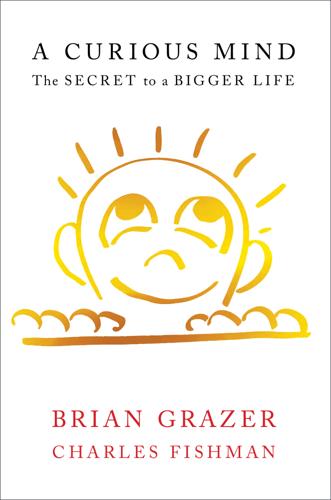
A Curious Mind: The Secret to a Bigger Life
by
Brian Grazer
and
Charles Fishman
Published 6 Apr 2014
Torture takes place all over the planet, and I wanted people to be able to see it. What I learned from Veronica, her sense of mastery, connects to the psychology of the characters in many other movies and shows. When I first read astronaut Jim Lovell’s account of the explosion and crisis on the Apollo 13 capsule, I couldn’t really grasp the details of the spacecraft, the orbital mechanics, the issues with fuel and carbon dioxide and skipping off the top of Earth’s atmosphere. What I connected with immediately was the sense Lovell conveyed of being trapped, of being in a physical setting, also a life-or-death setting, where he and his fellow astronauts had lost control. They had to adopt a mind-set like Veronica’s—they had to create an alternate narrative—to have the psychological strength to get themselves back to Earth.

Never Panic Early: An Apollo 13 Astronaut's Journey
by
Fred Haise
and
Bill Moore
Published 4 Apr 2022
He seemed to sleep only five hours a night and feasted during the day on cheese, peanut butter, and crackers when at the apartment. Ed and I were straight and narrow types. We left our abode within the first two months, when our families made the move to Houston. The Original 19 studied astronomy, aerodynamics, rocket propulsion, communication, space medicine, meteorology, navigation, orbital mechanics, and geology. For me, much of the material was a refresher, except for geology—that was an entirely new experience. To acquaint us with what the professional geologists and scientists might do with samples that we would bring back from the Moon, we had an introductory geology lab where we studied thin sections of rock samples and discussed their chemical makeup.
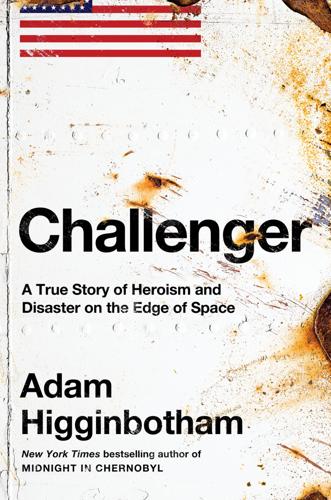
Challenger: A True Story of Heroism and Disaster on the Edge of Space
by
Adam Higginbotham
Published 14 May 2024
Although none of the women discussed it, they all knew they were being watched for signs of weakness. And they were determined to disappoint those who expected them to fail. Back in Houston, much of the training was a grind: day after day of lectures, on the history of spaceflight, the methods and procedures of the Astronaut Office, spacecraft engineering, flight operations, orbital mechanics, space navigation, and the myriad subsystems of the Space Shuttle itself; as many of these systems were still in development when the classes began, they were often taught by the same engineers responsible for designing and building them. Because the astronauts would be expected to observe Earth from orbit, there were also lectures on geology, volcanology, oceanography, and meteorology from space; they were instructed in astronomy, and in the life and material sciences that would be the subject of experimentation aboard the shuttle.
…
Until recently, there had been a plan to use the Space Shuttle in a mission to rescue the rudimentary space station by boosting it into a higher trajectory; but when, after a series of miscalculations, Skylab’s orbit began decaying at unexpected speed, while Columbia remained in the hands of the Puzzle People at the Cape, the project was quietly shelved. For all their expertise in orbital mechanics, and a chain of radar tracking stations strung around the globe at their command, NASA experts had to admit to the public that they could not say for certain where or when the debris from the doomed station—the largest piece of which was a lead-lined photographic vault weighing two tons, capable of making a crater on Earth five feet wide and a hundred feet deep—might make landfall.
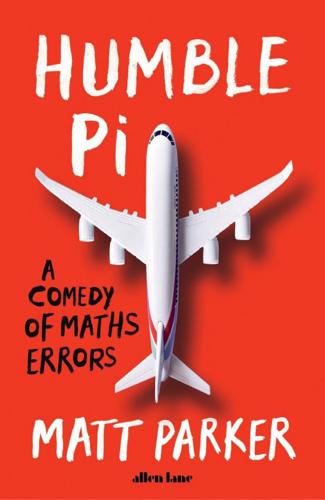
Humble Pi: A Comedy of Maths Errors
by
Matt Parker
Published 7 Mar 2019
The Earth’s orbit is 365 days, 6 hours, 9 minutes and 10 seconds: slightly more than 365.25 days. The Julian calendar is too short compared to the orbit. But it is too long compared to the seasons. Bizarrely, the seasons don’t even exactly match the orbital year. We’re now at the level of calendar resolution when other orbital mechanics come into play. As the Earth orbits, the direction it is leaning also changes, going from pointing directly at the sun to pointing away every 13,000 years. A calendar perfectly matching the Earth’s orbit will still swap the seasons every 13,000 years. If we factor the Earth’s axial precession (the change in how it leans) into its orbit, the time between seasons is 365 days, 5 hours, 48 minutes and 45.11 seconds.
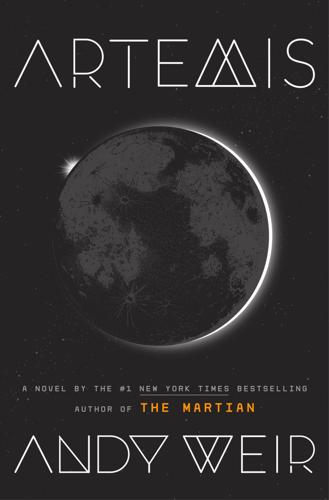
Artemis
by
Andy Weir
Published 14 Nov 2017
For their smart feedback in various arenas, but most especially for helping me tackle the challenge of writing a female narrator, Molly Stern (publisher), Angeline Rodriguez (Julian’s assistant), Gillian Green (my UK editor), Ashley (my girlfriend), Mahvash Siddiqui (friend, who also helped make sure the portrayal of Islam was accurate), and Janet Tuer (my mom). ABOUT THE AUTHOR ANDY WEIR built a career as a software engineer until the success of his debut novel, The Martian, allowed him to pursue writing full-time. He is a lifelong space nerd and a devoted hobbyist of subjects such as relativistic physics, orbital mechanics, and the history of manned spaceflight. He lives in California. What’s next on your reading list? Discover your next great read! * * * Get personalized book picks and up-to-date news about this author. Sign up now.
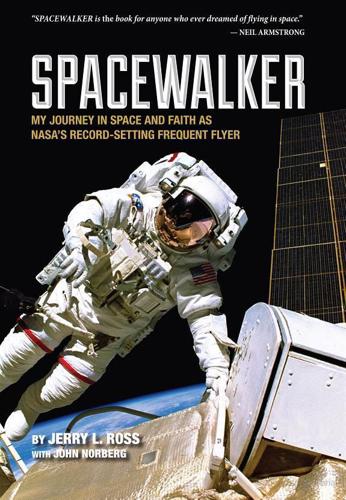
Spacewalker: My Journey in Space and Faith as NASA's Record-Setting Frequent Flyer
by
Jerry Lynn Ross
and
John Norberg
Published 31 Jan 2013
Those patches have lunar dust embedded in them. The paintings are beautiful. It was all extremely interesting, and Al was very gracious.The visit was a special treat from one of the twelve Moon walkers. Our ASCAN training lasted one year. I enjoyed my classmates and the whole training process. NASA instructors taught us about orbital mechanics, the human body and how it is affected by space travel, space physics, planetary sciences, the scientific principles involved in the types of experiments we might do, and all about the orbiter systems and subsystems. We received training on Shuttle operations. We learned water and land survival skills.
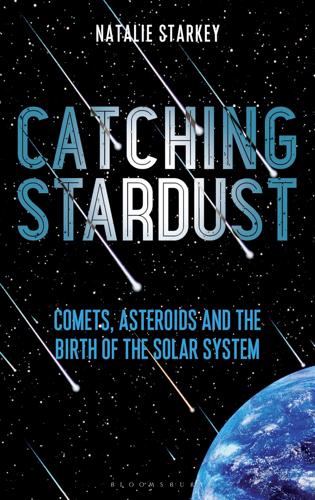
Catching Stardust: Comets, Asteroids and the Birth of the Solar System
by
Natalie Starkey
Published 8 Mar 2018
A cross-section through the lithosphere (the rigid outer portion of the Earth hosting the tectonic plates) and asthenosphere (the underlying easily deformed layer which the tectonic plates slide over) demonstrating how tectonic plates undergo subduction – where one plate sinks beneath another – to create volcanic arcs on the overriding plate. At around 700 million years after Solar System formation, computer models that simulate orbital mechanics during this time show that Jupiter and Saturn briefly experienced an orbital resonance as Jupiter was slowly migrating inwards to the Sun. An orbital resonance is where two orbiting bodies exert a gravitational influence on each other because their orbital periods (the time it takes them to orbit the Sun) are related by a ratio of two small integers, in this case 2:1 (i.e.

Interplanetary Robots
by
Rod Pyle
It is hypothesized to have a large volume of water ice below its surface. Phoebe also has its own faint, diffuse ring, thought to be a byproduct of other bodies smashing into it over the course of its life. Fig. 32.2. A Mercator map of Phoebe's surface built from images captured by Cassini's single pass of the moon (orbital mechanics proscribed further study). Its fast rotation of about nine hours allowed Cassini to image the entire surface as it sailed by at a distance of about two hundred miles. Image from NASA/JPL-Caltech. After this brief reconnaissance, Cassini moved on to begin its long relationship with Saturn and its other moons.

A New History of the Future in 100 Objects: A Fiction
by
Adrian Hon
Published 5 Oct 2020
The investigators came the next morning. They didn’t even believe me at first. Didn’t think an old lady like myself could’ve pulled it off! “Excuse me, ladies,” I snapped. “I may be on the far side of sixty, but I still know my way around a secure shell. I’ve been writing Python scripts and calculating orbital mechanics since you were sucking on your moth–” “Ma’am, I think we all get the idea,” they said. “If you really do understand the full gravity of taking responsibility for this action, so be it. Your income will be reduced to single standard. You will be required to triple your community contribution hours for the next ten years.

Time Travelers Never Die
by
Jack McDevitt
Published 10 Sep 2009
And he knew the Earth was round. Although he thought it was permanent and unchanging. Afterward, Shel shook his head: “I’ve never seen anyone so obviously brilliant who has everything so wrong.” “It’s a time without science,” Dave said. “Nobody knows anything. I felt sorry for him. Trying to make sense of orbital mechanics with no telescope. That was what, 330 B.C.?” “331.” “I think we should cut him a break.” “Yeah. I was dying to tell him the sun is a star. That he’s thinking small.” “That might be one more reason we shouldn’t be doing this. But you’re right. I was sitting there the whole time with one of the most famous guys in history.
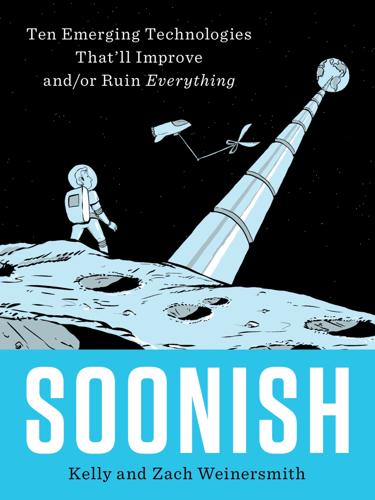
Soonish: Ten Emerging Technologies That'll Improve And/or Ruin Everything
by
Kelly Weinersmith
and
Zach Weinersmith
Published 16 Oct 2017
If a thing is in geostationary orbit that just means that if you are sitting at the equator and looking up through a telescope, the thing will always be at the same point. It’s revolving around the Earth as fast as the Earth is turning. And it’s at a particular velocity and distance that means it naturally keeps whirling around Earth without needing a boost at any time. We’ll skip the orbital mechanics, but the basic results are that the cable is relatively taut, but not so taut that it rips apart; and the counterweight doesn’t loop around the Earth, tying the cable around the equator like a giant spool of thread. How you would get a counterweight is another matter, but there are three common proposals—capture a near-Earth asteroid, gather a lot of the space crap we’ve left up there over the years, or just have the cable be soooooo long that its sheer mass will hold the cable taut.

The Deep Learning Revolution (The MIT Press)
by
Terrence J. Sejnowski
Published 27 Sep 2018
(The Department of Defense had recently poured $600 million into its Strategic Computing Initiative, a program that ran from 1983 to 1993 but came up short on building a vision system to guide a self-driving tank.)9 “Good luck with that,” was my reply. Gerald Sussman, who made several important applications of AI to real-world problems, including a system for high-precision integration for orbital mechanics, defended the honor of MIT’s approach to AI with an appeal to the classic work of Alan Turing, who had proven that the Turing machine, a thought experiment, could compute any computable function. “And how long would that take?” I asked. “You had better compute quickly or you will be eaten,” I added, then walked across the room to pour myself a cup of coffee.

The Quantum Magician
by
Derek Künsken
Published 1 Oct 2018
The work was frustratingly inelegant, but after some minutes, he worked out that it described a pair of wormholes, only dozens of meters across, imperfectly bound to one another, forming a one-way bridge across eleven years of time. They’d found not one of the forerunners’ wormholes, but two, stuck together by some accident of orbital mechanics. A pair of wormholes bound together would give off all sorts of quantum-level interference, probably the odd electromagnetic fields he’d felt when approaching the fleet. The wormholes could be nearby. Then it hit him: they were only a dozen meters in diameter. The Expeditionary Force was carrying the pair of wormholes in one of their ships.
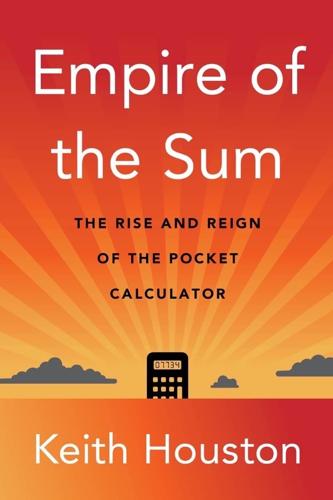
Empire of the Sum: The Rise and Reign of the Pocket Calculator
by
Keith Houston
Published 22 Aug 2023
Johnson at Work.” NASA Images, 1962. https://images.nasa.gov/details-LRC-1962-B701_P-09381. The “girl” was one Katherine Johnson, a forty-three-year-old Black woman, and she was ideally placed to give Glenn the reassurance he needed. In her nine years at NASA, Johnson had coauthored a paper on orbital mechanics that informed, in part, the computer programs that Glenn did not trust.45 With three days to spare before the launch and an astronaut needing reassurance, Johnson sat down at her electromechanical Friden STW-10 calculator and got to work.46 In all ways, the machine that Katherine Johnson would rely upon to put a man in orbit was robustly unexceptional.

You've Been Played: How Corporations, Governments, and Schools Use Games to Control Us All
by
Adrian Hon
Published 14 Sep 2022
Who wouldn’t want to use ideas from game design to make difficult or dull activities more fun—to gamify them? That’s what led me to cocreate Zombies, Run!, a game that’s turned running into an adventure for over ten million players. It’s why I admire Rock Band, Kerbal Space Program, and Pokémon GO for making it enjoyable to learn the guitar, understand orbital mechanics, and walk more every day. But these apps and games aren’t the gamification we’re most likely to encounter in our lives. Our phones and watches now come with built-in missions and achievements for hitting ever-increasing fitness and productivity goals. In the classroom, teachers reward and punish children with behavioural management apps, doling out points at the tap of a button.

Space Chronicles: Facing the Ultimate Frontier
by
Neil Degrasse Tyson
and
Avis Lang
Published 27 Feb 2012
Every science-fiction fan knows that if you rotate your spacecraft at just the right speed, or accelerate your spaceship at the same rate as an object falls to Earth, you will weigh exactly what you weigh on your doctor’s scale. Thus, during those long, boring journeys, you can always, in principle, simulate Earth gravity. Another notable application of Newton’s orbital mechanics is the slingshot effect. Space agencies often launch probes from Earth that have too little energy to reach their planetary destinations. Instead, the orbital wizards aim the probes along cunning trajectories that swing near a moving source of gravity, such as Jupiter. By falling toward Jupiter in the same direction as Jupiter moves, a probe can gain as much speed as the orbital speed of Jupiter itself, and then sling forward like a jai alai ball.

Whole Earth Discipline: An Ecopragmatist Manifesto
by
Stewart Brand
Published 15 Mar 2009
• We can get practice on how to engineer the Earth ecosystem with a light touch by stepping up to a bit of solar system engineering first. Earthlings now have the ability, but not yet the will, to prevent devastating asteroid and comet strikes. Astronaut Rusty Schweickart has led the way on this one. (He’s had occasion to take orbital mechanics more seriously than most. On the Apollo 9 mission in 1969, which took place entirely in Earth orbit, he flew the Lunar Module 111 miles away from the Command Module. Because his craft could not reenter the atmosphere without burning up, he had to navigate back to the Command Module and dock with it, or die.)
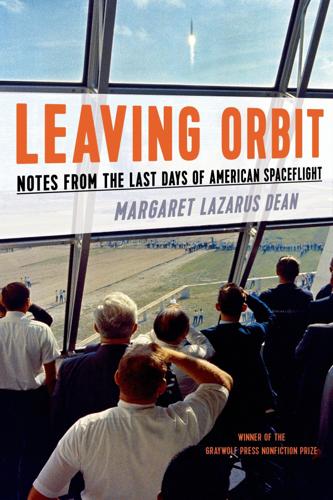
Leaving Orbit: Notes From the Last Days of American Spaceflight
by
Margaret Lazarus Dean
Published 18 May 2015
His total reimbursement for the trip was thirty-three dollars. He tells us about his idea for the Aldrin Cycler, a series of spacecraft put into permanent orbits around Earth and Mars that would allow humans to travel to Mars by hopping from one to the next. (This proposal might sound silly coming from most public figures, but Buzz’s expertise in orbital mechanics demands that we take the idea seriously). He ends by telling us about his idea he calls ShareSpace—a way of paying for human spaceflight through a lottery. Buy a ticket, get a chance in a random drawing to be selected to go to space. If you don’t get chosen, you have the satisfaction of knowing that your money went to help further the project.
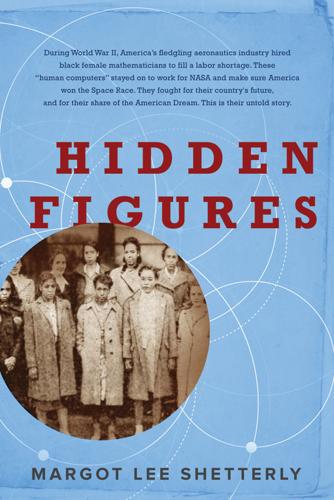
Hidden Figures
by
Margot Lee Shetterly
Published 11 Aug 2016
Even in the early, confusing months after Sputnik, the top engineers in those divisions, with decades of experience in flight-test research (and many with a not-so-secret love of science fiction) sensed that they were on the cusp of a once-in-a-lifetime opportunity. They threw themselves into the class. John Mayer tackled orbital mechanics, Al Hamer lectured on rocket propulsion, and Alton Mayo handled reentry, the problems faced by an object returning to Earth. Carl Huss taught the physics of the solar system. Ted Skopinski was the trajectories guy, elaborating on the math describing the path taken by a space vehicle as it left Earth’s surface and settled into orbit around it.

Bringing Columbia Home: The Untold Story of a Lost Space Shuttle and Her Crew
by
Michael Leinbach
and
Jonathan H. Ward
Published 23 Jan 2018
Assuming an injured shuttle could dock to the ISS, its crew could await a rescue mission for ninety days or more. This “safe haven” capability was one of the key factors that led NASA to approve the resumption of shuttle flights.5 The issue was more problematic for servicing missions to the Hubble Space Telescope, which is in a different orbit than the ISS.6 Because of the laws of orbital mechanics, the amount of fuel needed to move the space shuttle between the orbits of Hubble and the ISS was far greater than the orbiter could carry. The ISS could not be a safe haven for a Hubble mission. Without a rescue capability, Sean O’Keefe felt that the risks to human life did not justify prolonging Hubble’s life by a couple of years.
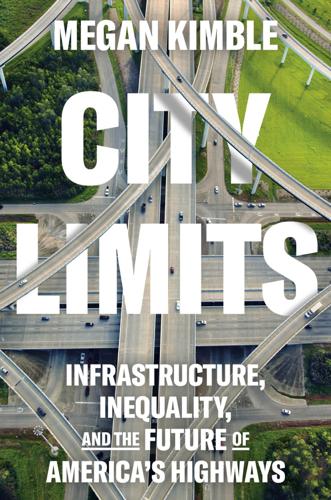
City Limits: Infrastructure, Inequality, and the Future of America's Highways
by
Megan Kimble
Published 2 Apr 2024
In 2016, the expansion of the elevated highway that ran in front of the brewery was a vague possibility, not an imminent threat. He and his partners poured concrete, installed new windows, and built a barrel room, sinking nearly half a million into the structure before opening as True Anomaly Brewing Company in 2019. The name comes from an orbital mechanics term—“the part of an equation that you would use to find out your relative position to an object in space,” Duckworth says. He talks like a space engineer—“we were able to re-vector pretty quick,” he says of COVID-19. They sold growlers during the first uncertain months and hosted live music on the patio as the year wore on.
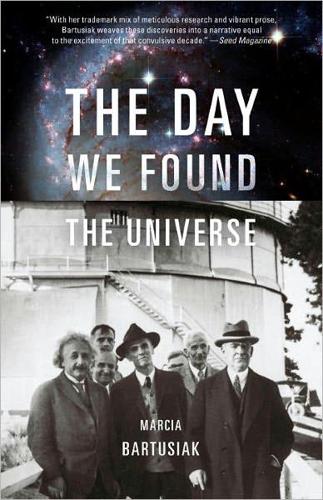
Day We Found the Universe
by
Marcia Bartusiak
Published 6 Apr 2009
His most productive days were behind him. His scientific life, in a way, came to a standstill as he awaited construction of a bigger telescope to advance his cosmic searches. During World War II, he was stationed at the U.S. Army's Ballistics Research Laboratory at Aberdeen, Maryland. There he applied his student training in orbital mechanics to calculating artillery-shell trajectories. Over the years, his noted arrogance tempered a bit. Astronomer George Abell, who briefly worked for Hubble while a graduate student in the early 1950s, remembered him as a “very gracious, kindly person, a real gentleman… He always seemed to have time to talk to students and night assistants… He may have mellowed in his old age.”
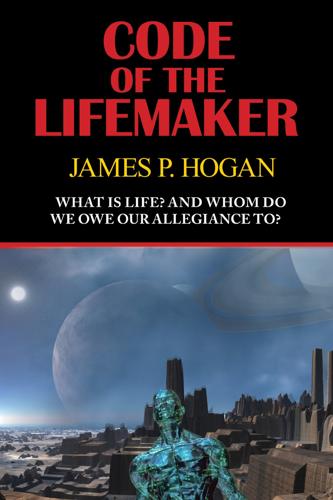
Code of the Lifemaker
by
James P. Hogan
Published 1 Jan 1983
"I could use a couple of good engineering project managers and program directors," Ramelson said, not quite able to keep a sharp edge out of his voice. "Could Jeremy handle a structural dynamicist ten years older than him and with twenty years' experience? What does he know about Doppler radar or orbital mechanics? Those are the people I need." "Now you're being pompous. All I—" "Oh, I didn't want to suggest anything like that," Valerie interrupted hastily. "But maybe something less demanding—possibly more in the administrative area, but not too humdrum ..." She treated Ramelson to a smile of sweet, wide-eyed reasonableness.

Why We Sleep: Unlocking the Power of Sleep and Dreams
by
Matthew Walker
Published 2 Oct 2017
Since the birth of our planet, and every single day thereafter without fail, the sun has always risen in the morning and set in the evening. Indeed, the reason most living species likely adopted a circadian rhythm is to synchronize themselves and their activities, both internal (e.g., temperature) and external (e.g., feeding), with the daily orbital mechanics of planet Earth spinning on its axis, resulting in regular phases of light (sun facing) and dark (sun hiding). Yet daylight isn’t the only signal that the brain can latch on to for the purpose of biological clock resetting, though it is the principal and preferential signal, when present. So long as they are reliably repeating, the brain can also use other external cues, such as food, exercise, temperature fluctuations, and even regularly timed social interaction.
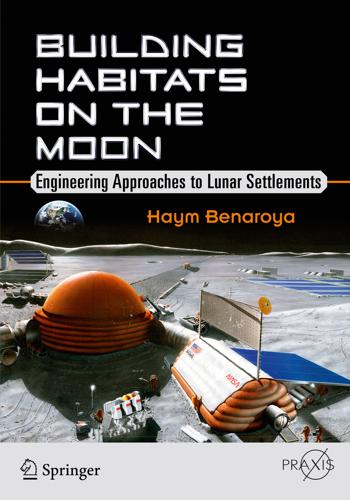
Building Habitats on the Moon: Engineering Approaches to Lunar Settlements
by
Haym Benaroya
Published 12 Jan 2018
On the positive side, I can state two precepts that constitute necessities for the successful design of deep space habitats which, except for cislunar space, are by definition long-duration habitats. ‘Get the Physics Right’ and ‘ECLSS Comes First’. First, get the physics right and extract the implications for habitat and spacecraft design. Understand the physics of the space environment, orbital mechanics, spacecraft propulsion and stabilization, and what they mean for the safe functioning of the space habitat on whatever platform it resides. The atmosphere, dust , gravity, radiation , and thermal environments stand out among these regimes. Second, design the Environmental Control and Life Support System (ECLSS), including thermal control FIRST, before designing or selecting a module .
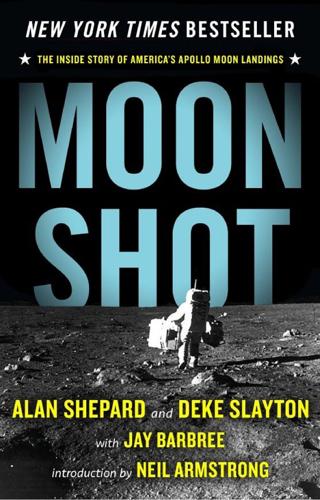
Moon Shot: The Inside Story of America's Apollo Moon Landings
by
Jay Barbree
,
Howard Benedict
,
Alan Shepard
,
Deke Slayton
and
Neil Armstrong
Published 1 Jan 1994
It was incredible. Alan Shepard had more than once found himself holding his breath during the most critical elements of the flight, the fiery ascent, separation of rocket stages, insertion into orbit, flying the exquisitely demanding shifts in power and height above the earth to ride the rails of orbital mechanics in order to meet up with Soyuz, the docking. Yet Alan quickly distanced himself from the technical aspects. His mind soared to capture a vision of Deke testing the delicious sensation of zero gravity, of knowing finally that incredible feeling of weightlessness. And he thought of Deke floating on the edge of the heavens, staring out at the moon and planets, individual stars and whole galaxies, and he knew Deke was now one of those privileged few who with a single glance could drink in the beauty of the gleaming earth below, lift his head, and become part of the universe.

More Everything Forever: AI Overlords, Space Empires, and Silicon Valley's Crusade to Control the Fate of Humanity
by
Adam Becker
Published 14 Jun 2025
If anything goes wrong on the ISS, the astronauts can evacuate and be home in a few hours. The astronauts on Apollo 13 only had to wait an excruciating three-and-a-half days before returning home in their crippled spacecraft. On a Mars mission gone awry, help would be months away—or more than a year. Part of the problem is the distance involved, but the orbital mechanics are also difficult. Unlike trips to low Earth orbit or the Moon, Mars launches are only undertaken at certain times, when the two planets are in the right positions relative to each other. That means no rescue in a reasonable amount of time would be possible for a Mars mission in trouble. Even if nothing goes wrong, there’s the dangers of the zero-gravity environment within the spacecraft itself: extended time in zero-g leads to muscle atrophy, bone-density loss, and a variety of other physical ailments.

CTOs at Work
by
Scott Donaldson
,
Stanley Siegel
and
Gary Donaldson
Published 13 Jan 2012
Krill: Well, one thing that's nice about APL is that we have 3300+ technical staff that I can talk with, and I have a lot of personal connections from my 38 years here. I go to conferences, as I determine the need, to get up to speed at some base level, or present a paper, or to network. For example, I went to an orbital mechanics conference once, just to be somewhat knowledgeable in that domain. I read a lot. Besides our staff, it's really helpful for me to maintain relationships with my fellow CTOs and with other leaders who have their own connections, such as universities—again, ‘connecting to the connectors'. Siegel: But how do you do that?
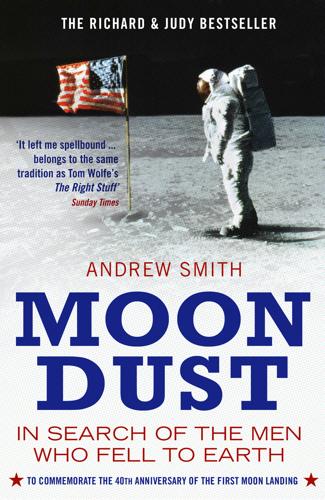
Moondust: In Search of the Men Who Fell to Earth
by
Andrew Smith
Published 3 Apr 2006
Thus, through increasing your speed, you’ve ended up further behind your target than you were in the first place – which means that, bizarre as it sounds, the solution for an astronaut who wishes to catch up with another craft is to decrease velocity, so sinking to a lower, shorter, faster orbit, then to gradually transfer back up to the original one at precisely the right point to meet the target. This stuff is called “orbital mechanics” and it manifestly is rocket science. All of which means that Armstrong and Scott were feeling good about catching and connecting with a specially adapted Agena rocket which had been fired into space for precisely this purpose. In fact, they’d made it look easy, and as they entered a part of their orbit where they would be out of contact with NASA’s tracking stations on the ground, everything looked fine.

A Half-Built Garden
by
Ruthanna Emrys
Published 25 Jul 2022
In the aislands they still thought that way: everything had a price, and anything could be sold away if someone offered enough in exchange. For the watersheds—for me—some complexities could never be broken down for trade. “A few of us probably will want that simplicity. Some humans will go with you, or start building something in this solar system. That’s all fine with me as long as they don’t block the stars or mess with our orbital mechanics. Or take apart our gas giants: St. Julien can tell you about the life NASA’s found on the moons out there, and those bacteria deserve a chance too. But for me—Earth is our symbiosis. We’ve screwed it up, badly, but we’re trying to fix it now, and we won’t do right by any new relationship if we leave it behind
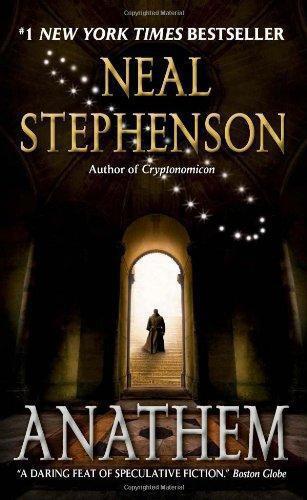
Anathem
by
Neal Stephenson
Published 25 Aug 2009
he said, not really sounding sorry—more miffed that I had become miffed. He was hard to talk to, and sometimes I’d go months avoiding him. But slowly I’d learned it could be worth the aggravation. “Forget it,” I said. “What have Orolo’s group been up to?” “I’ve no idea, I just do the calculations. Orbital mechanics.” “Theorical or—” “Totally praxic.” “You think they have found a planet around another star?” “How could that be? For that, they have to collate information from other telescopes. And we haven’t gotten anything in ten years, obviously.” “So it’s something nearer,” I said, “something that can be picked out with our telescopes.”
…
Just to name one example: if I were pursuing another object in the same orbit, my natural instinct would be to fire a thruster that would kick me forward. But that would move me into a higher orbit, so the thing I was chasing would soon drop below me. Everything we knew down here was going to be wrong up there. Even for those of us who’d learned orbital mechanics at Orolo’s feet, the only way for us to really grasp it was by playing this game. “It is deceptive,” was Jules’s observation. He and I were in one of those cells together. I’d become good, early, at playing the game, since I knew the underlying theorics, so helping others learn it had become my role.

Accelerando
by
Stross, Charles
Published 22 Jan 2005
City, which paused the replay for Amber's outburst, permits it to continue. "Youse harbbring da' fugitive Amber Macx an' her magic cat. We wan' da cat. Da puta's yours. Gotser uno orbit: You ready give us ther cat an' we no' zap you." The screen goes dead. "That was a fake, of course," Sirhan adds, looking inward where a ghost is merging memories from the city's orbital mechanics subsystem: "They aerobraked on the way in, hit ninety gees for nearly half a minute. While that was sent afterward. It's just a machinima avatar, a human body that had been through that kind of deceleration would be pulped." "So the bailiffs are –" Amber is visibly struggling to wrap her head around the situation.

Chaos Monkeys: Obscene Fortune and Random Failure in Silicon Valley
by
Antonio Garcia Martinez
Published 27 Jun 2016
As a form of rapid on-boarding, Boz was invited along to client meetings with the product marketers and managers. On the one hand, this was slightly preposterous. He had zero qualifications, other than Zuck’s confidence, for the job. On the other hand, who are we kidding? It was advertising technology, not orbital mechanics; a mentally agile techie, having spent an action-packed career learning (if not creating) new technologies and business models, could learn enough high-level basics to make (mostly) intelligent decisions—particularly if the entire team bent over backward to train you in a hurry. That’s effectively what happened, and from late 2012 on, Boz was increasingly involved in Ads strategizing and general mass-email-thread politicking.
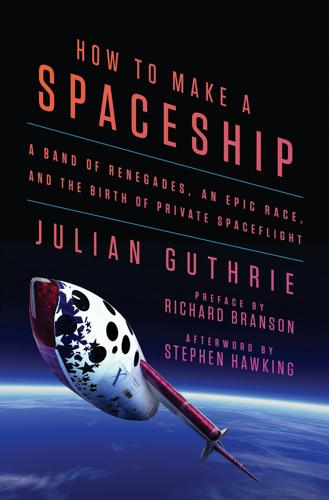
How to Make a Spaceship: A Band of Renegades, an Epic Race, and the Birth of Private Spaceflight
by
Julian Guthrie
Published 19 Sep 2016
In Todd, Gregg met a kindred spirit—a fellow space geek who would inspire him to give up pencil pushing and focus on something he really loved. Gregg agreed to become a senior adviser to SEDS and quickly bonded with Peter, Todd, and Bob. Three years later, in 1985, Gregg, who had been teaching orbital mechanics and dabbling in space science in his free time, officially made the leap from law to space. He went to work with scientist and author Gerry O’Neill, running the Space Studies Institute at Princeton. Gregg’s wife, Maureen, joked that O’Neill had promised: “You could earn as much as some poets!”

The Mission: A True Story
by
David W. Brown
Published 26 Jan 2021
For members of the mission, then, it meant being methodical and selective. It wasn’t enough to know what you didn’t know; you had to know the best things no one knew, or even thought to ask, and then have the spacecraft collect the data to answer them. Observation planning was high-stakes work, made more so by the harsh reality of orbital mechanics. You miss your one shot at a particular moon, and that might be it, ever, for an entire generation of scientists. Galileo might never pass that moon in that configuration again, and it might be thirty years before NASA got another spacecraft to the Jovian system to fill the gap. Galileo’s project and camera leads, in addition to running a spacecraft, taught and managed university departments and advised NASA and generally pushed planetary science forward.
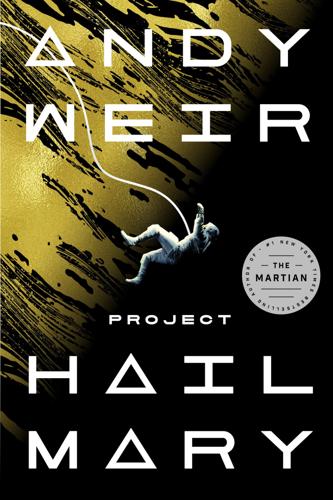
Project Hail Mary
by
Andy Weir
Published 15 May 2021
BY ANDY WEIR Project Hail Mary Artemis The Martian ABOUT THE AUTHOR Andy Weir built a career as a software engineer until the success of his first published novel, The Martian, allowed him to live out his dream of writing full-time. He is a lifelong space nerd and a devoted hobbyist of subjects such as relativistic physics, orbital mechanics, and the history of manned spaceflight. He also mixes a mean cocktail. He lives in California. Andyweirauthor.com Facebook.com/AndyWeirAuthor Twitter: @andyweirauthor What’s next on your reading list? Discover your next great read! Get personalized book picks and up-to-date news about this author.

Riding Rockets: The Outrageous Tales of a Space Shuttle Astronaut
by
Mike Mullane
Published 24 Jan 2006
On February 6, 1985, Abbey phoned me (no office visit this time) to tell me I was being assigned to the first shuttle mission to fly from Vandenberg AFB in California. Abbey had finally drawn the air force’s attention when he assigned Bob Crippen, a navy captain, to command the most “air force” of all missions—the first Vandenberg flight. The air force was the lead service in DOD military space operations, and it was a fact of orbital mechanics that many of their satellites had to be launched into polar orbits. For a spy satellite to see all of America’s potential enemies, it has to have a view of all the Earth. A satellite orbiting around the Earth’s poles gets such a view as the Earth spins underneath it. But it is impossible to launch polar orbiting satellites from the Kennedy Space Center, because a north- or south-directed launch from KSC would endanger populations below the rocket flight path.
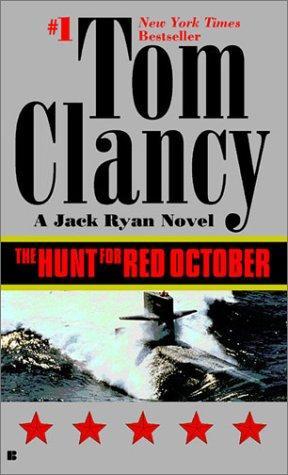
The Hunt for Red October
by
Tom Clancy
Published 2 Jan 1984
Greer wondered if that would change in time. He hoped not. After lunch a package arrived by messenger from the National Reconnaissance Office. It contained the photographs taken earlier in the day on two successive passes by a KH-11 satellite. They'd be the last such photos for a while because of the restrictions imposed by orbital mechanics and the generally miserable weather on the Kola Peninsula. The first set of visible light shots taken an hour after the FLASH signal had gone out from Moscow showed the fleet at anchor or tied to the docks. On infrared a number of them were glowing brightly from internal heat, indicating that their boilers or gas-turbine engine plants were operating.

Velocity Weapon
by
Megan E. O'Keefe
Published 10 Jun 2019
Nox put a weapon down and pointed at them with the gun oil–stained rag he’d been using to clean it. “She means the details.” Arden picked their head up and squinted at Nox with the same raw bewilderment Jules thought they might express if a houseplant had suddenly up and started lecturing them on orbital mechanics. “Which. Details. Exactly?” “The guardcore themselves, for starters,” she said, swooping in to explain things before those two idiots got themselves into a fight that’d slow everything down. “No insignia, small numbers. And yeah, they hit your place in the morning, but I don’t think they would have if they hadn’t been in a rush to clean up what they’d missed after hitting our”—she cleared her throat—“house.
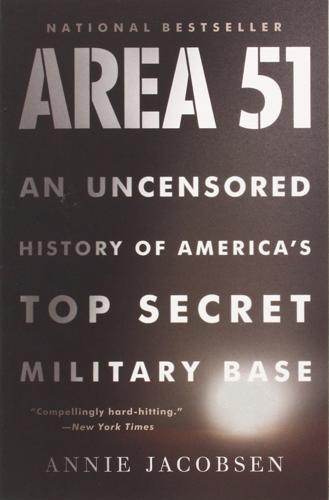
Area 51: An Uncensored History of America's Top Secret Military Base
by
Annie Jacobsen
Published 16 May 2011
“I tried redirecting the discussion back to a legitimate discussion about space,” Aldrin says. Instead the interviewer played a clip from the Fox documentary about moon hoaxes. Aldrin believes “conspiracy theories are a waste of everybody’s time and energy,” and he got up and left the interview. “I’m someone who has dealt with the exact science of space rendezvous and orbital mechanics, so to have someone approach me and seriously suggest that Neil, Mike, and I never actually went to the moon, but that the entire trip had been staged in a sound studio someplace, has to rank with one of the most ludicrous ideas I’ve ever heard,” says Aldrin. Then, down in the hotel lobby, a large man in his midthirties approached Buzz Aldrin and tried to spark a conversation.

Patriot Games
by
Tom Clancy
Published 2 Jan 1987
He was playing voyeur, trying to discern the figure of someone who was probably a terrorist. There were no such attractions at camps -04 and -18, and he wondered at the significance of this until he remembered that only one satellite was giving daylight photos with people in them. Ryan made a note to himself to check at the Academy's library for a book on orbital mechanics. He decided that he needed to know how often a single satellite passed over a given spot in a day. "You're not getting anywhere," he told himself aloud. "Neither is anybody else," Marty Cantor said. Ryan spun around. "How did you get in here?" Jack demanded. "I'll say one thing for you, Jack, when you concentrate you really concentrate.

The Evolutionary Void
by
Peter F. Hamilton
Published 18 Aug 2010
To the navy exploration vessel that had found it in 3072, it was as if a planet-sized starship had tried to erupt out of hyperspace with only partial success, the nose slicing out cleanly into spacetime while the tail section was still lost amid the intricate folds of the universe’s underlying quantum fields. The only thing that ruined that big-aerodynamic-starship image was the sheer size of the brute. On top of the triangle was a five-kilometer-diameter spire that was a further two thousand kilometers in length—function unknown. Contrary to all natural orbital mechanics, the Spike remained oriented in one direction, with the tip pointing straight out of the Hot Ring ecliptic. Its concave curve also tracked the star as it traveled along its perfectly circular orbit like some heliotactic sail-shaped flower always following the light. Thus, the anchoring twist that held its base amid the whirling rocky particles was obviously active, although its mechanism was somewhere within the unreachable base.

The Year's Best Science Fiction: Twenty-Sixth Annual Collection
by
Gardner Dozois
Published 23 Jun 2009
My mobiles crawled all over me doing a visual check while a subprogram ran down the full diagnostic list. I linked up with Ilia Control to book a launch window, and ordered three tons of liquid hydrogen and oxygen fuel. Prepping myself for takeoff is always a welcome relief from business matters. It’s all technical. Stuff I can control. Orbital mechanics never have a hidden agenda. Edward returned four hours later. His tourist remote led the way, followed by a hired cargo lifter carrying the xenon, the mysterious container, and my power unit. The lifter was a clumsy fellow called Gojira, and while he was abusing my payload deck I contacted him over a private link.
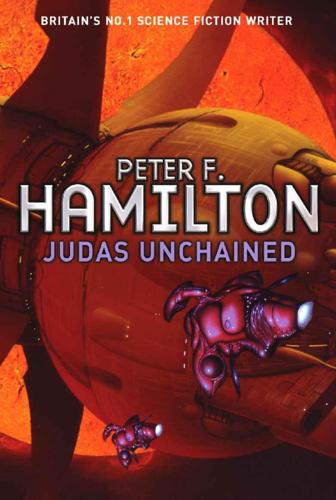
Judas Unchained
by
Peter F. Hamilton
Published 1 Jan 2006
He stood in front of the gateway as dawn rose above Half Way, flooding the barren rock island with red light and intense blue-white flashes. In the generator building behind the gateway, power was starting to feed in from the stormrider. He tried not to feel too smug about it, but with his knowledge of astroengineering and orbital mechanics, the technical types in Adam’s team had automatically deferred to him. It had taken him twenty minutes at the console in the generator building, mapping out the Stormrider’s primary systems and guidance programs, before he sent up the first batch of instructions. His virtual vision produced a basic flight profile display, with a long curving white line designating the Stormrider’s course as it flew around its perpetual loop.